1) KRIYA SHARIRA
The Vision of the Department of Sharira Kriya (Physiology) in an Ayurveda institution is typically:
“To achieve excellence in teaching, research, and application of Ayurvedic physiology by integrating classical knowledge with modern scientific advancements, fostering a deep understanding of human body functions, and contributing to the holistic development of healthcare.
The Mission of the Department of Sharira Kriya (Physiology) can be outlined as follows:
1. Quality Education – To impart comprehensive knowledge of Ayurvedic physiology (Sharira Kriya) by integrating classical Ayurvedic principles with modern scientific understanding.
2. Research & Innovation – To encourage research in Ayurvedic physiology and explore its correlation with contemporary medical sciences for evidence-based validation.
3. Practical Application – To enhance students’ clinical understanding by applying physiological principles in Ayurvedic diagnostics and treatment.
4. Holistic Development – To cultivate critical thinking, ethical practice, and professional competence among students for their role as future Ayurvedic practitioners and researchers.
5. Community Contribution – To promote awareness of Ayurveda’s physiological concepts in healthcare and contribute to the well-being of society through academic and outreach programs.
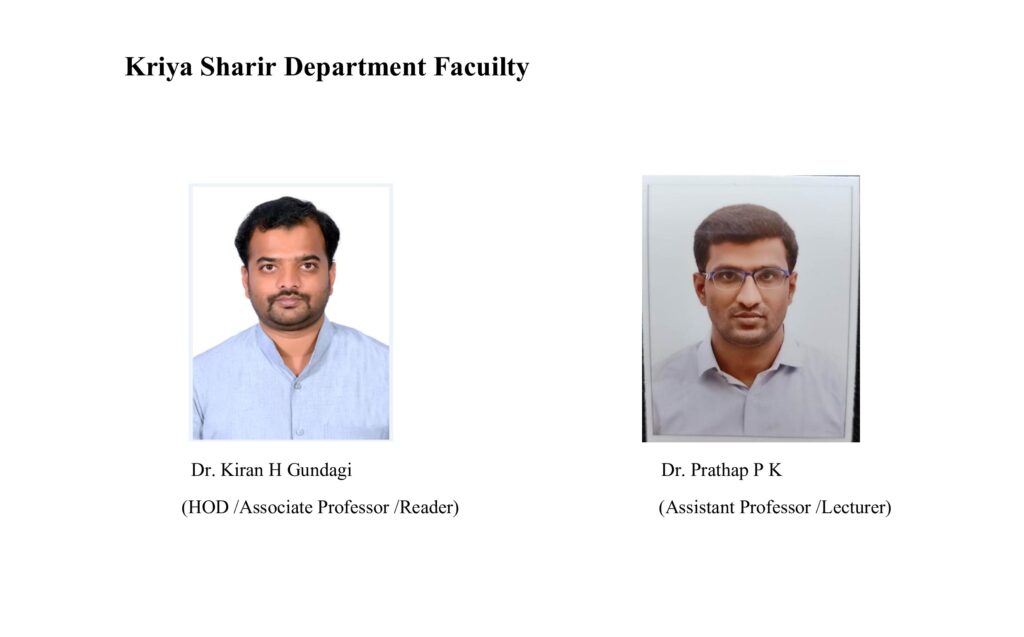
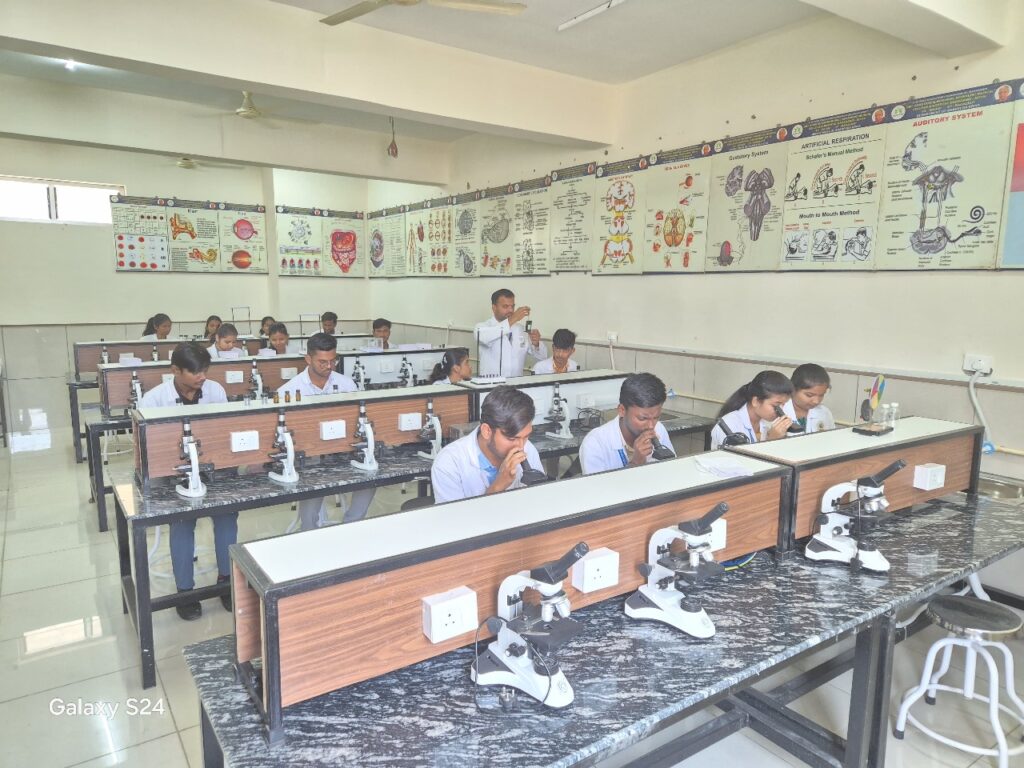
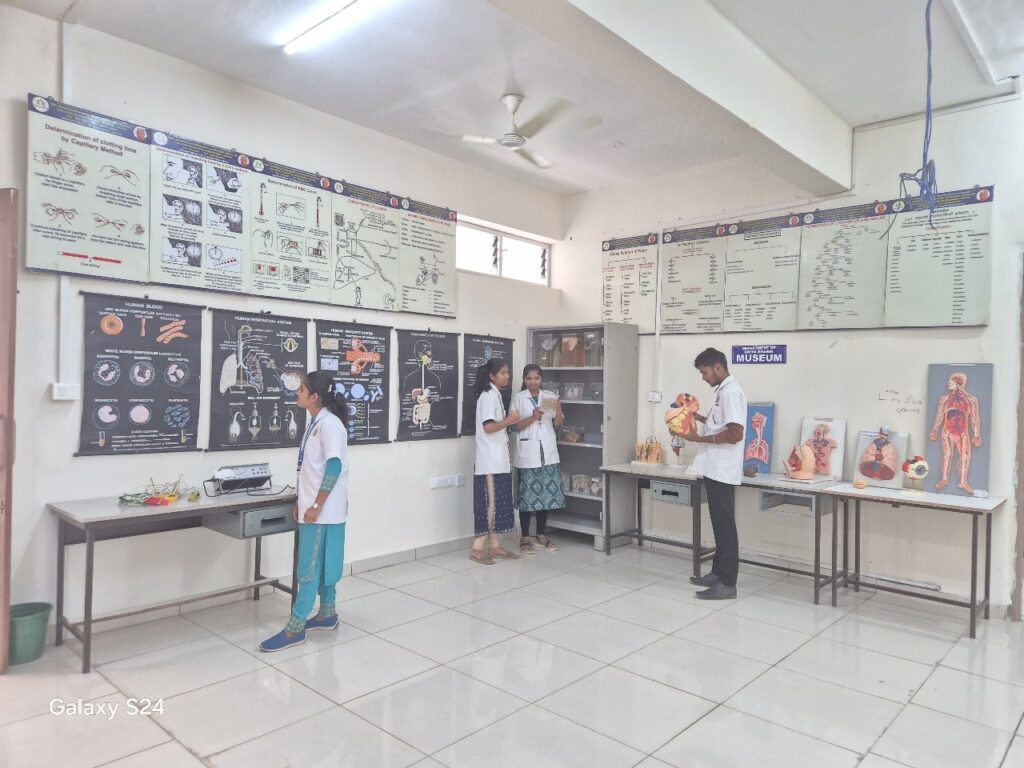

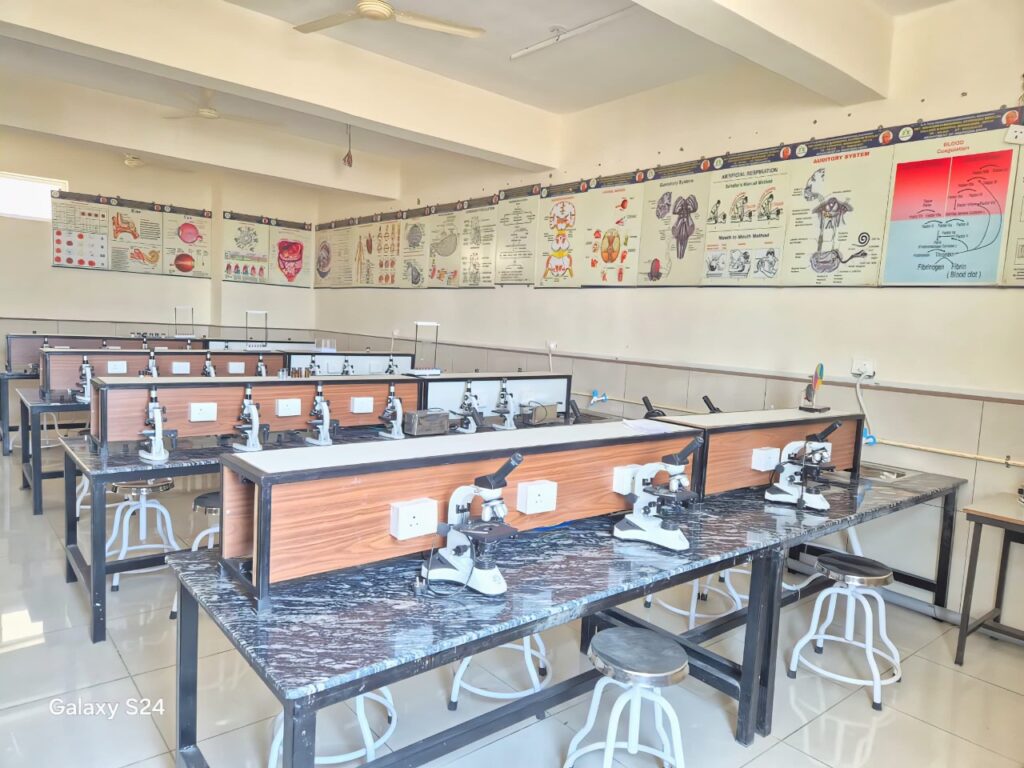

2 ) Rachana Sharir
VISION OF DEPARTMENT
INTRODUCTION:-Rachana Sharir is the subject that deals with the structural knowledge of the human body. Here, students learn human Anatomy with theoretical as well as practical aspect. We have spacious department along with museum which is full with various specimens, charts, models. Apart from this, we also have a dissection hall wherein students get the practical knowledge of the human body by performing cadaveric dissection.
- Every student who has got admission to our college should get acquainted with the subject by all means.
MISSION OF DEPARTMENT
- To develop fulfilled Rachana Sharir department following the norms of NCISM and get ready to transfer the knowledge of the subject to fore coming intake of hundred students.
OBJECTIVES
- To set the department in such a way that all the students taking admission to this college will be bestowed with all the resources required for attaining knowledge in the subject of Rachana Sharir.
- Every student should get theoretical and practical knowledge at par.
- To develop students’ creative as well as analytical thinking process while studying the subject.
TEACHING AND LEARNING METHODS USED BY DEPARTMENT :-We are practicing student centric teaching-learning method in our department. we use various teaching-learning methods like,
- Demonstration
- Model making
- Audio Visuals Aids
- Group discussion
- Shloka recitation
- Problem-based learning
- Case-based learning
- Self-directed learning
BENEFITS TO STUDENTS:-With the help of various teaching-learning methods that we use definitely arose interest in the subject. Students learn the subject in an easy way.
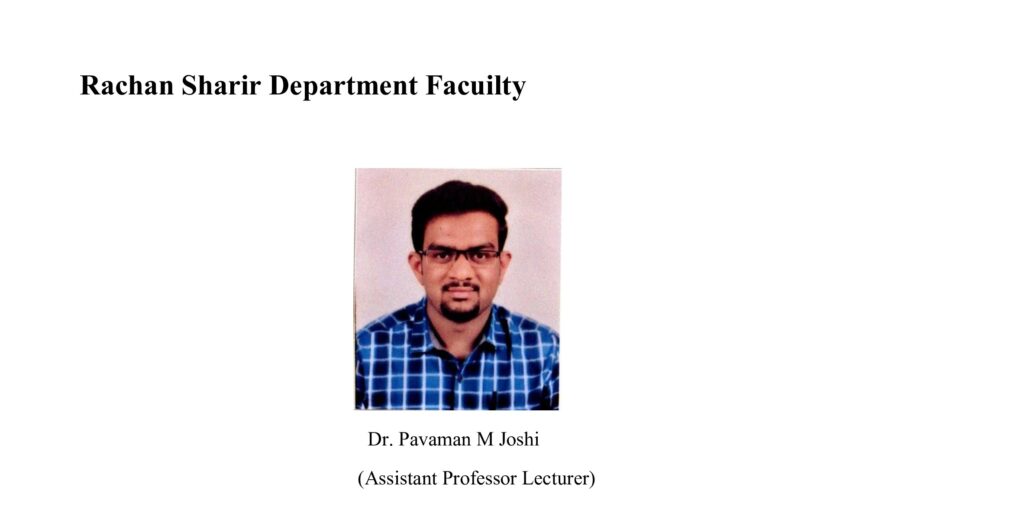
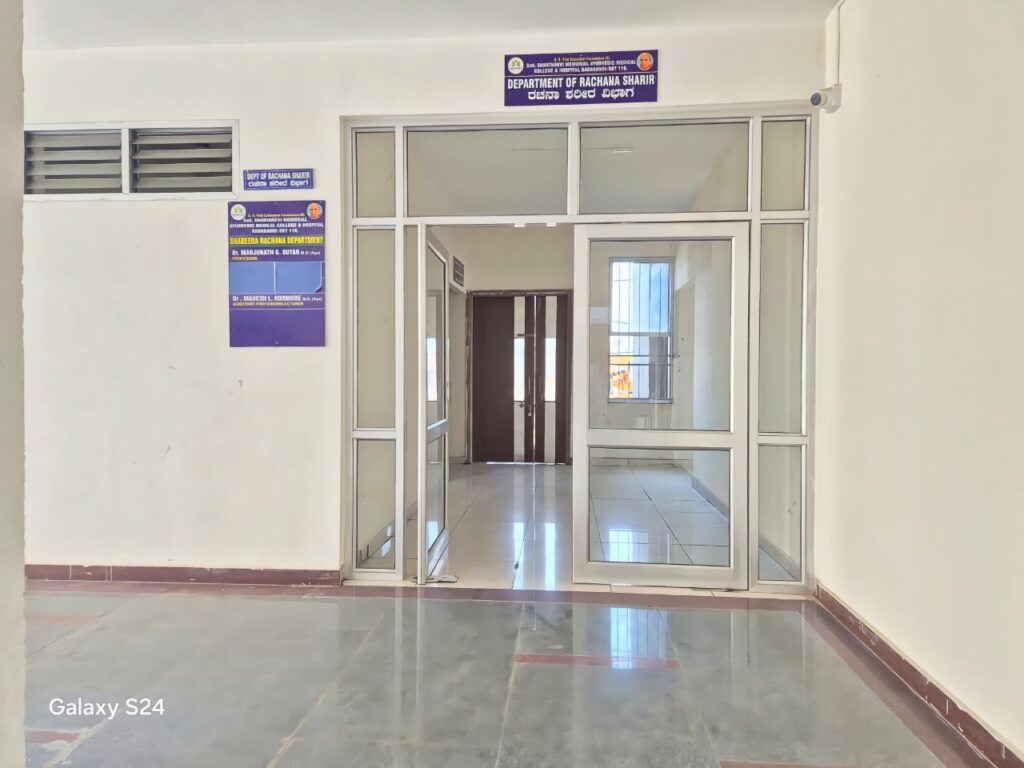
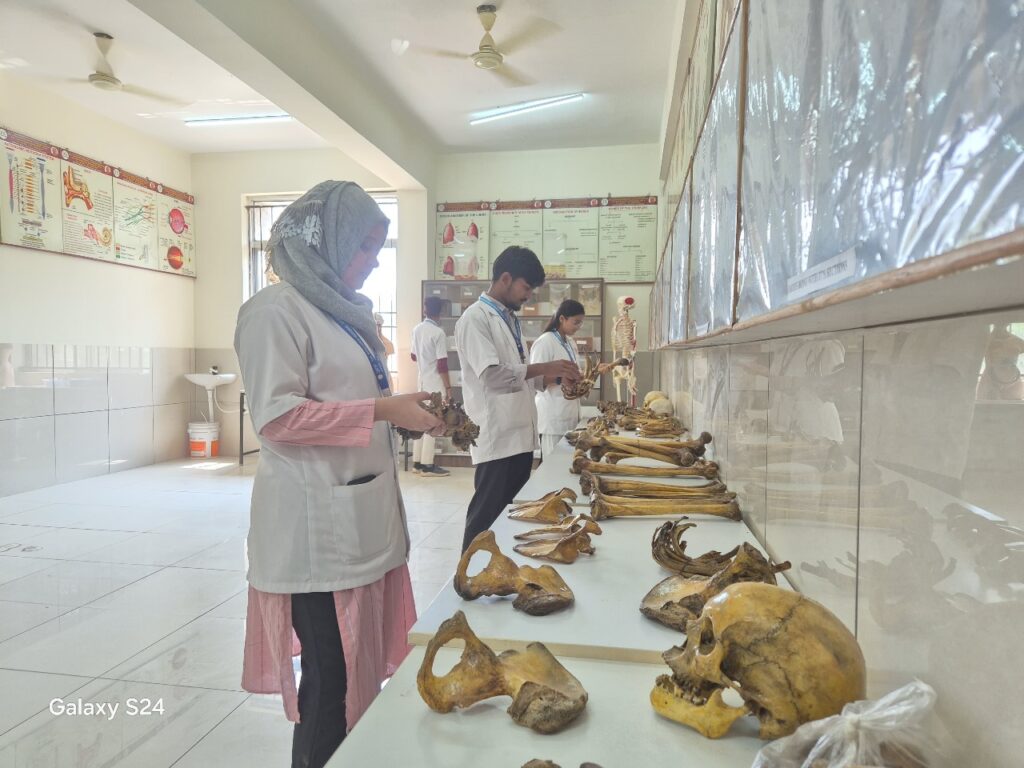
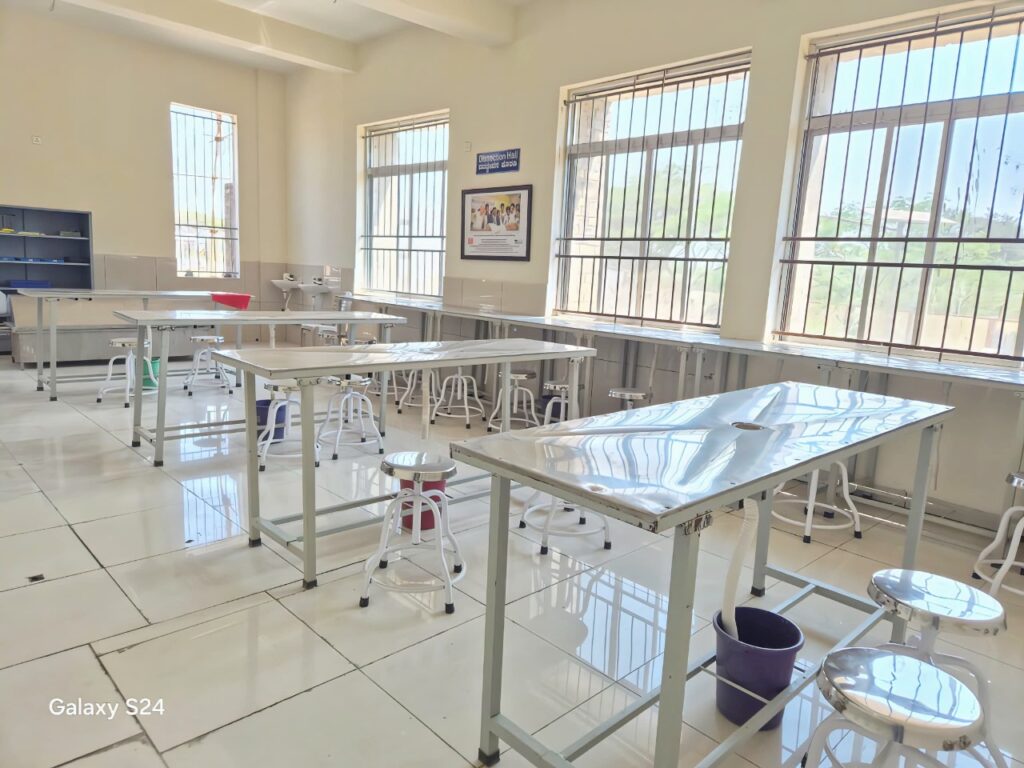
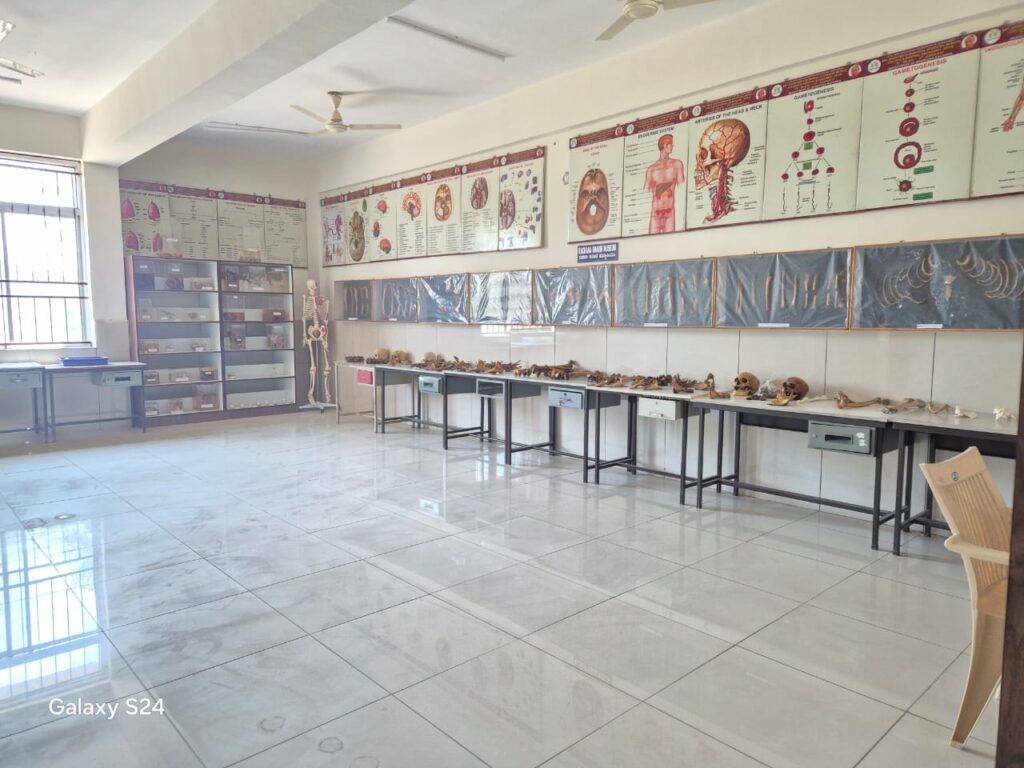
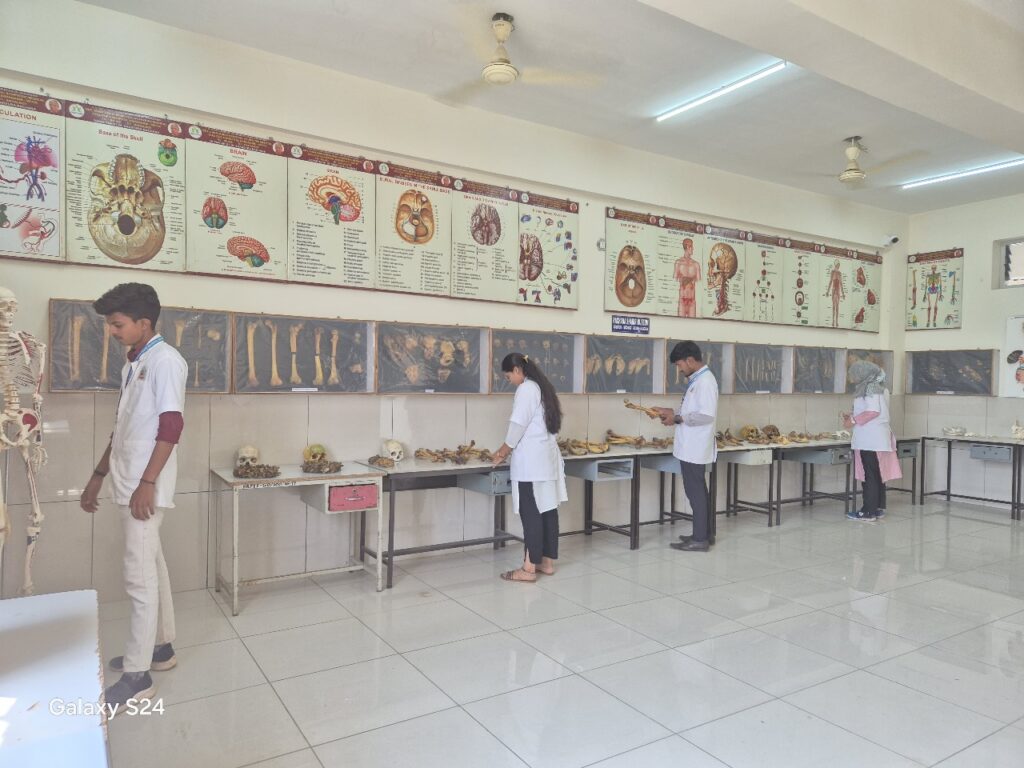
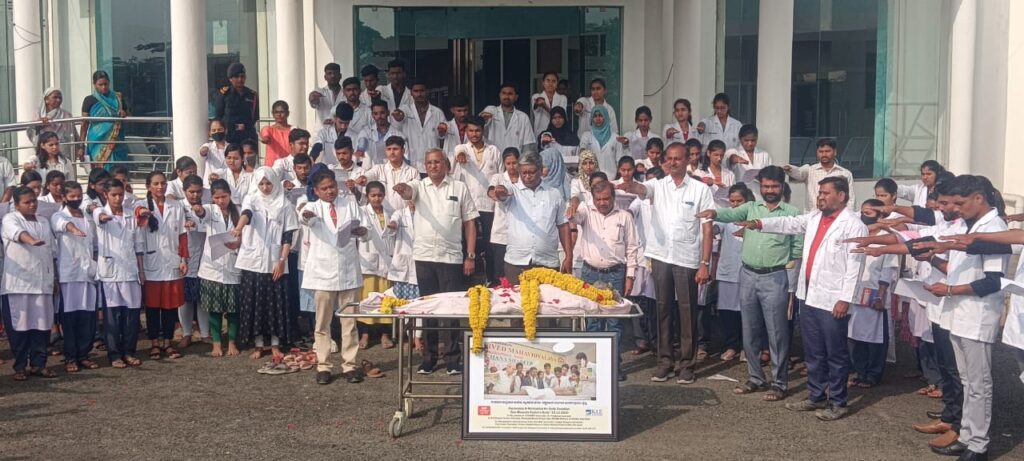
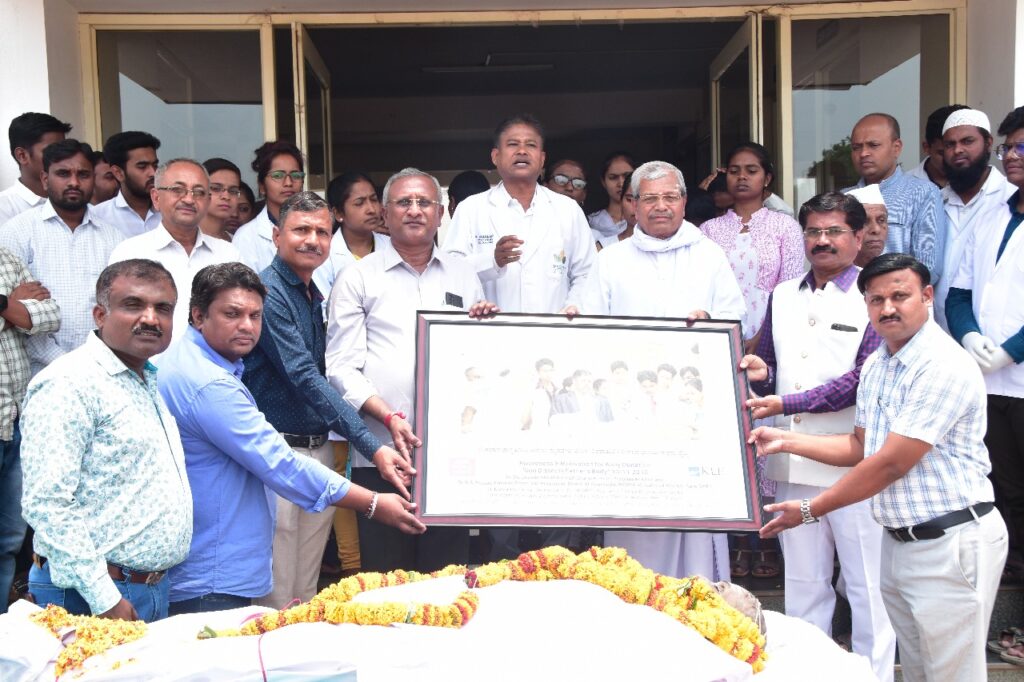
3) AYURVEDA SAMHITHA & SIDDHANTHA
INTRODUCTION : Our subject includes 3 major aspect of learning tools namely
- Sanskrit & Ayurved Itihas : Ayurveda originated as of vedic sciences. All original texts of Ayurveda science in Sanskrit so, the knowledge of Sanskrit language is compulsory to learn Ayurveda .This subject includes Sanskrit grammar which is necessary for reading & understanding various samhitas (Original Ayurvedic Texts) through which student gains thorough knowledge of Ayurvedic science.In Ayurvedic Itihas part the history of rich culture of Ayurveda from its origin upto recent era is explained.
- Samhita Adhyayana : This subject provides complete knowledge of ancient Ayurvdic texts namely Charak Samhita, Ashtang hridaya, Sushruta Samhita, for betterment of human life in context to achieve complete health. In this subject ideal behavioral patterns for human beings according to day(dinacharya), seasons(ritucharya), causative factors of diseases(hetu), Diagnosis of diseases(nidan), complete treatment of disease(chikitsa),etc. is explained in detailed manner.
- Padarth Vidnyan : This subject deals with knowledge of composition & functioning of human body through like Panchmahabhuta(five basic elements), kaal(time, age, season), disha (directions), Aatma (knowledge of human soul), Mann(psychological aspect).This subject also deals with explaining different philosophical aspects (Darshana) regarding human behavioral pattern.
VISION OF DEPARTMENT:-To deliver perfect knowledge of Ayurvedic classical text to each students in simpler & practical form.
MISSION OF DEPARTMENT :-To develop perfect ayurvedic physicians by providing complete & undoubted knowledge from samhitas along with practical demonstration.
OBJECTIVES:-
- To acquire theoretical as well as practical knowledge of ancient & classical ayurvedic texts (samhitas)
- To compare & corelate knowledge from different classical Ayurvedic texts with current era in simpler language form for easy understanding for students.
- To bring confluence in achieving academic excellence and promoting scientific research methods in enlighten knowledge of Samhitas.
TEACHING & LEARNING METHODS USED BY DEPARTMENT:
- Audio visual Aids
- Tutorials
- Shloka recitation
- Group discussion
- Practical demonstration
BENEFITS TO STUDENTS:-Due to effective use of all the teaching tools students gets complete theoretical as well as practical knowledge regarding ayurveda as a health science. This will helps to develop perfect Ayurvedic physicians.
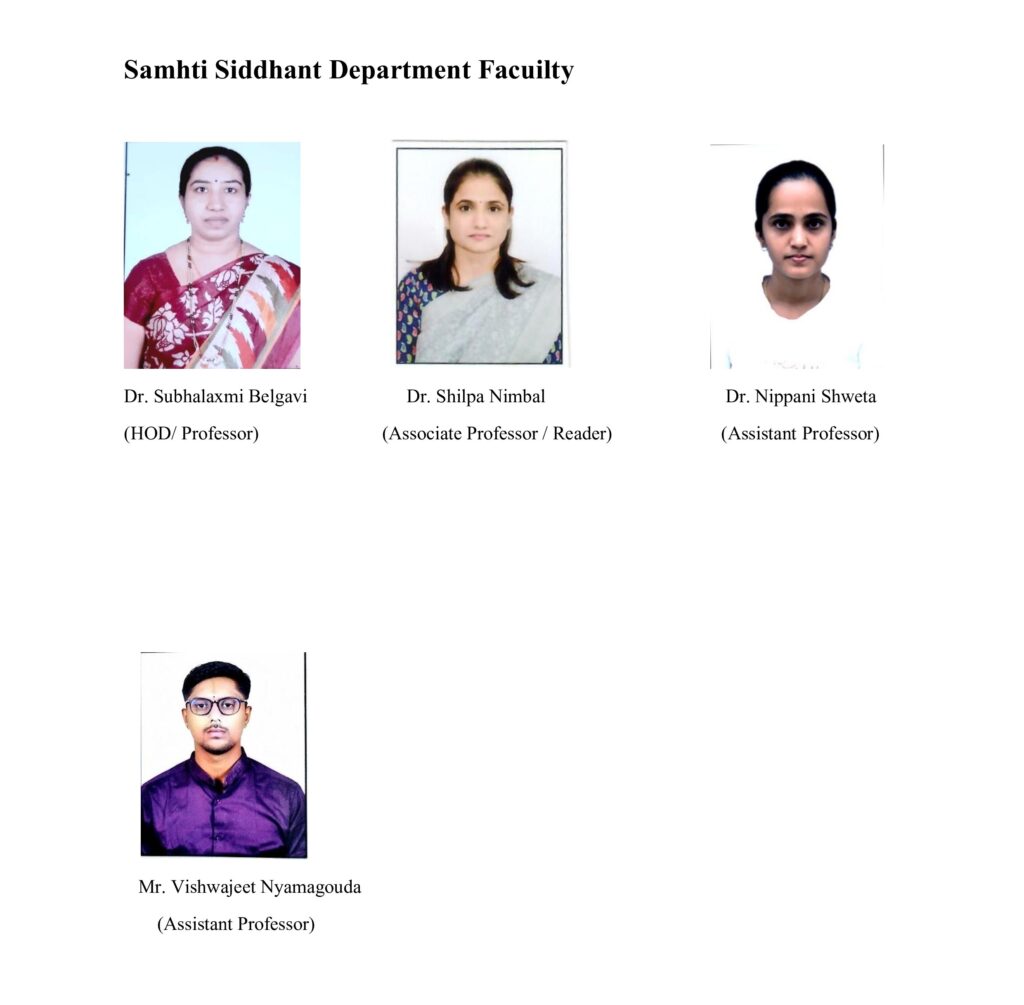

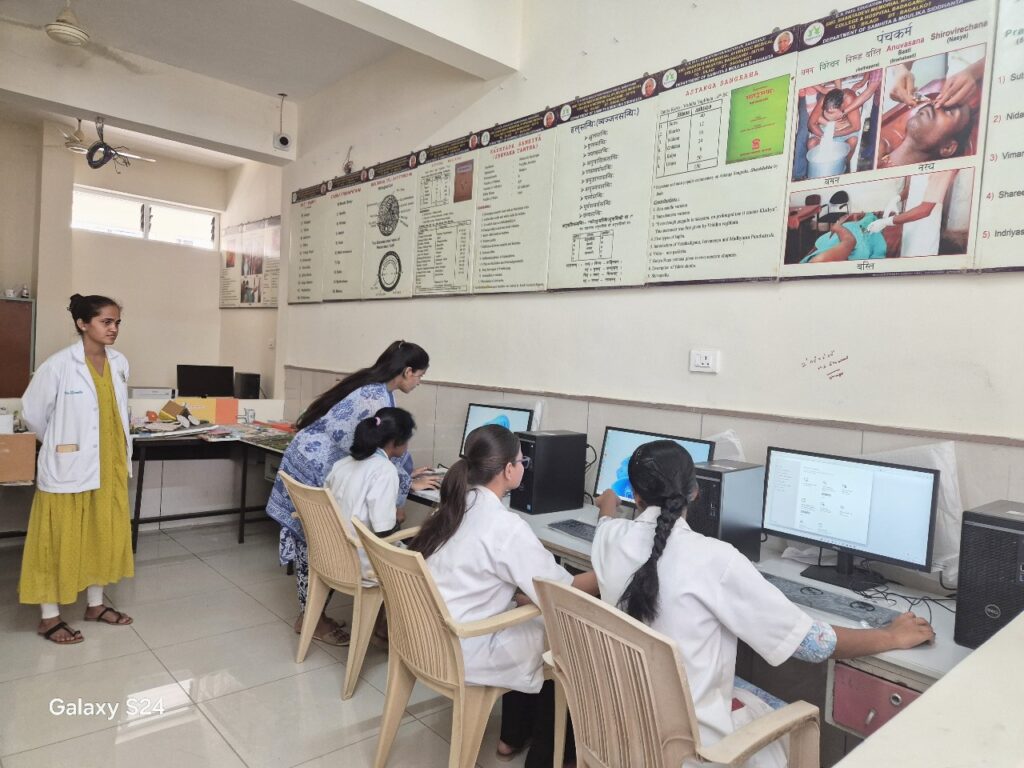
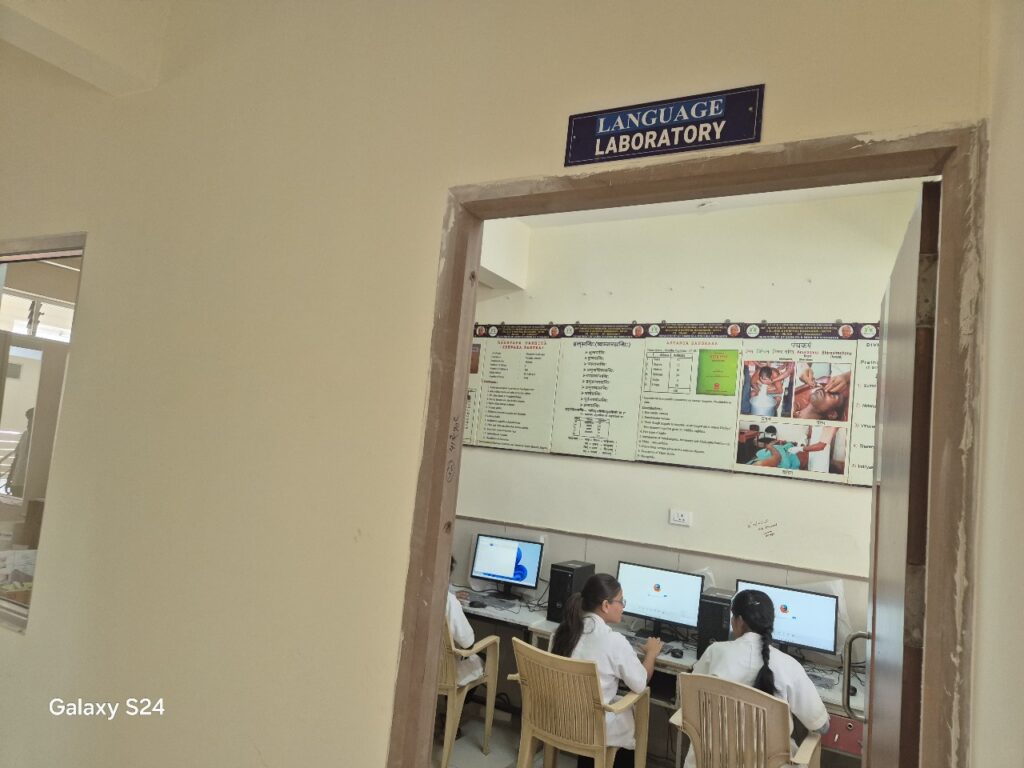
2nd Year Professional Departments
04 ) Rasashastra and Bhaisjyakalpana
INTRODUCTION: Our subject includes 2 different methods of preparation of medicine ie;
- Rasashastra- Rasa means Parad, and study about it in detail called shastra. In this subject we learn about Parad(Mercury) and other Minerals, Gems and Poisonous substances. which are clearly divided into groups. Each groups consist of 8-9 substance and each substance is well defined from its existence to its purification etc. From this all different minerals many medicinal formulations are prepared and explained properly and also preparation methods and Testing are explain in detail.
- Bhaisjyakalpana- bhaishya means Aushad. It deals with preparation of various compound/ formulation containing Herbal, Animal drug origin components through authentic standard procedure. Collectively all this final outcomes known as kalpanas.It is based on 5 basic kalpanas as well as on Upkalpana which are clearly discussed in this section.
VISION OF DEPARTMENT: Attain perfection in pharmaceutical processing of Ayurvedic formulations with Standard Operative Procedures.
MISSION OF DEPARTMENT: To develop standard quality dosage forms of Ayurveda formulations without altering the basic concepts to achieve utmost therapeutically benefits.
OBJECTIVES:
- To acquire Theoretical and practical knowledge of Kalpa at the end of Profession/course.
- To develop and modify classical formulations adopting advanced technology and to validate classical formulations to achieve safety and efficacy.
- To bring confluence in achieving academic excellence and promoting scientific Research methods in Rasashastra and Bhaishajya Kalpana.
TEACHING AND LEARNING METHODS USED BY DEPARTMENT: Teaching and learning process by the dept. is based on Student centric method. In which various techniques are used ie;
- Audio Visuals Aids
- Group discussion
- Tutorials
- Shloka recitation
- Demonstration
BENEFITS TO STUDENTS: Due to various activates conducted by dept. as well as using beneficial teaching methods students can get proper classical as well as modern knowledge about preparations of medicines
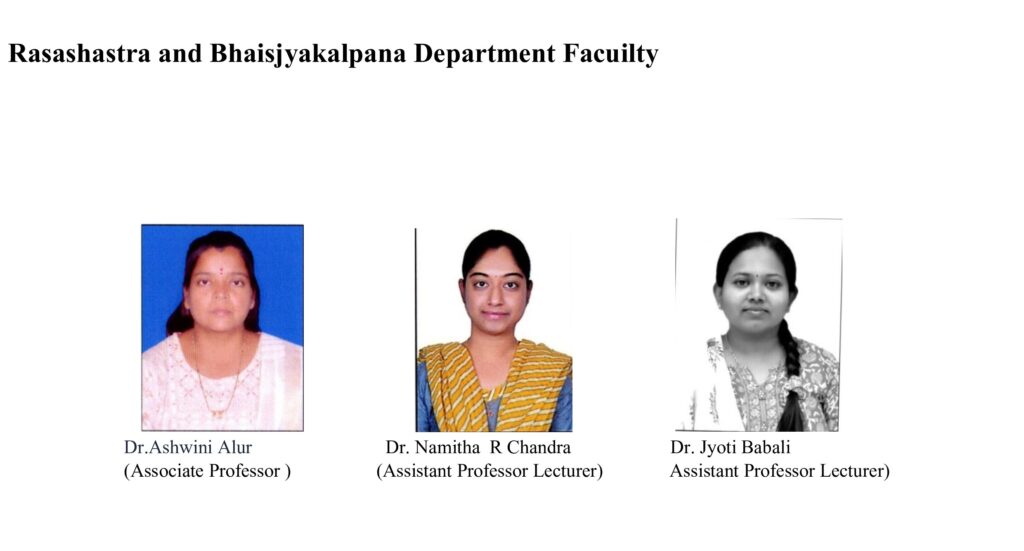
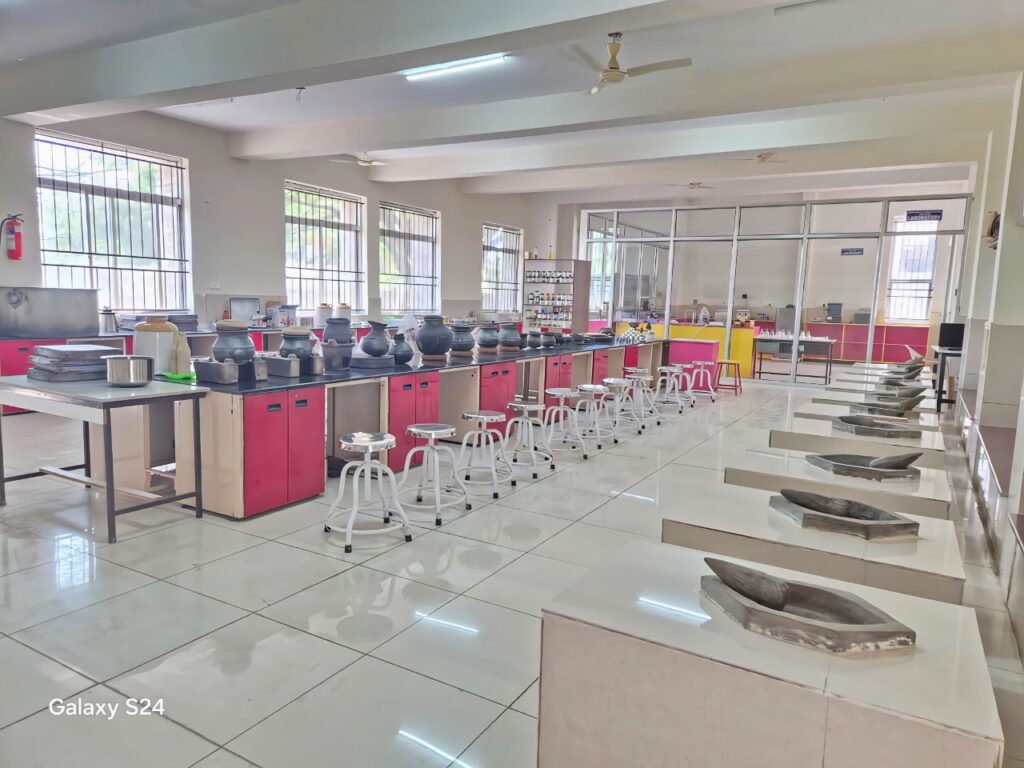
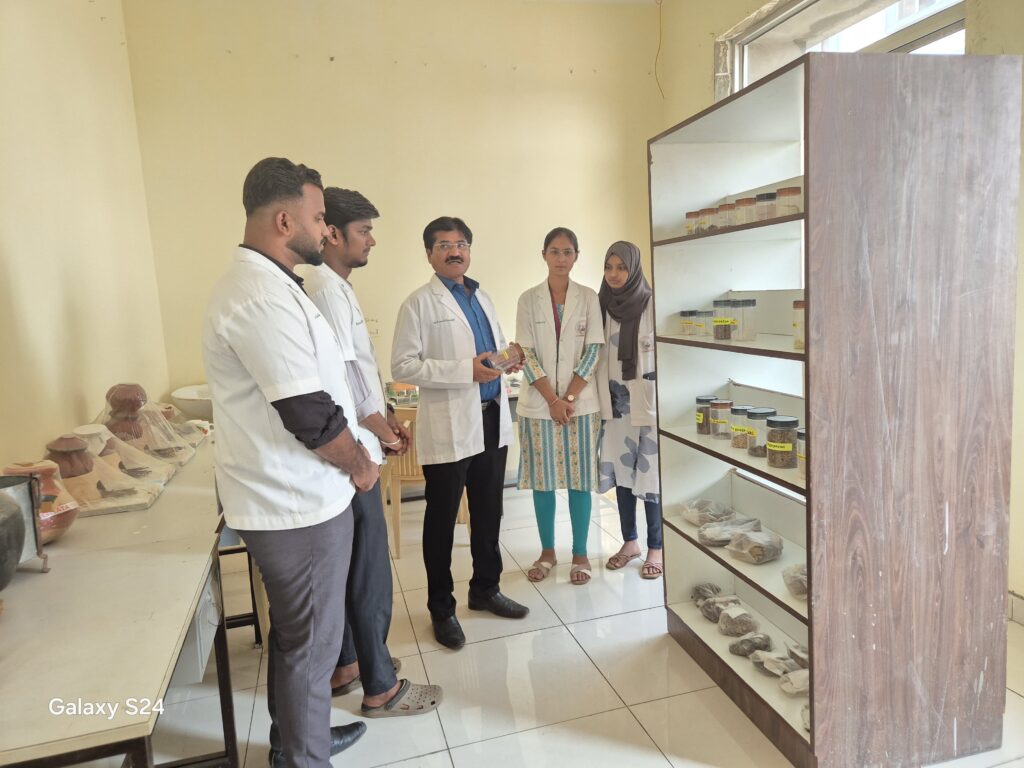
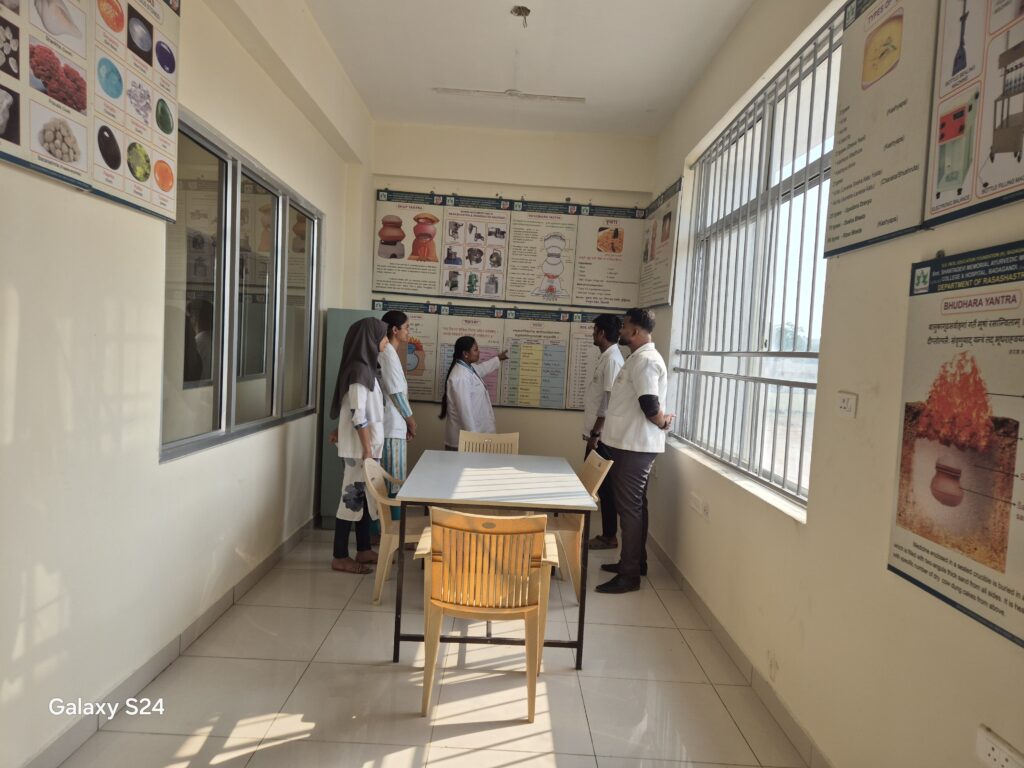
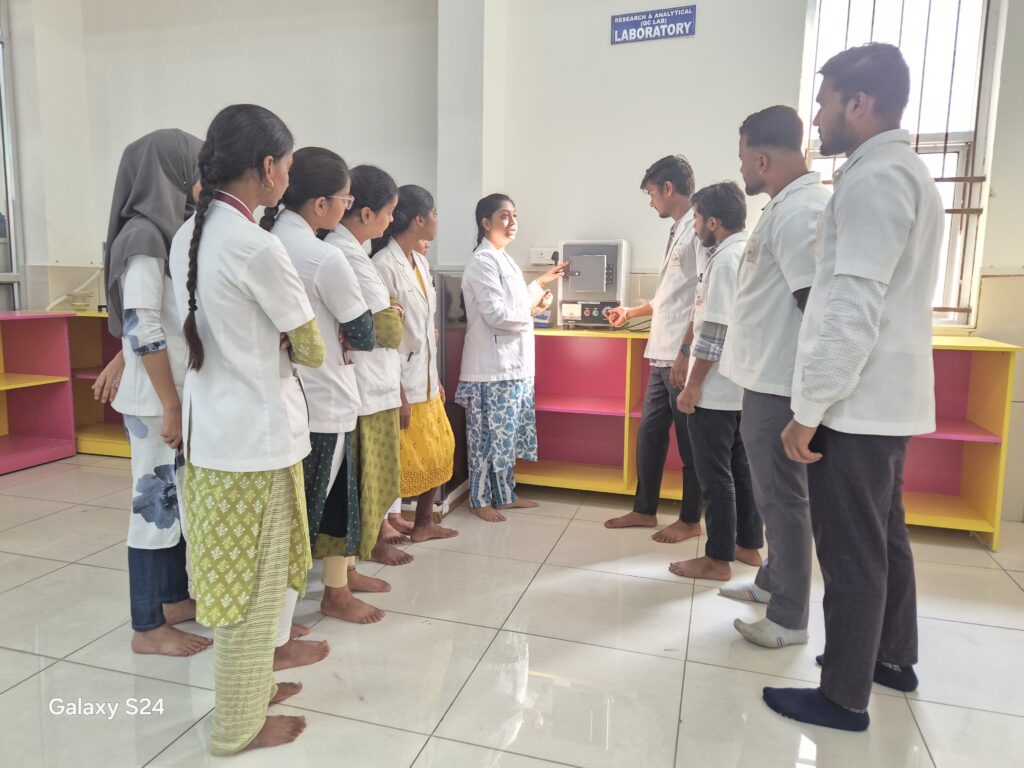
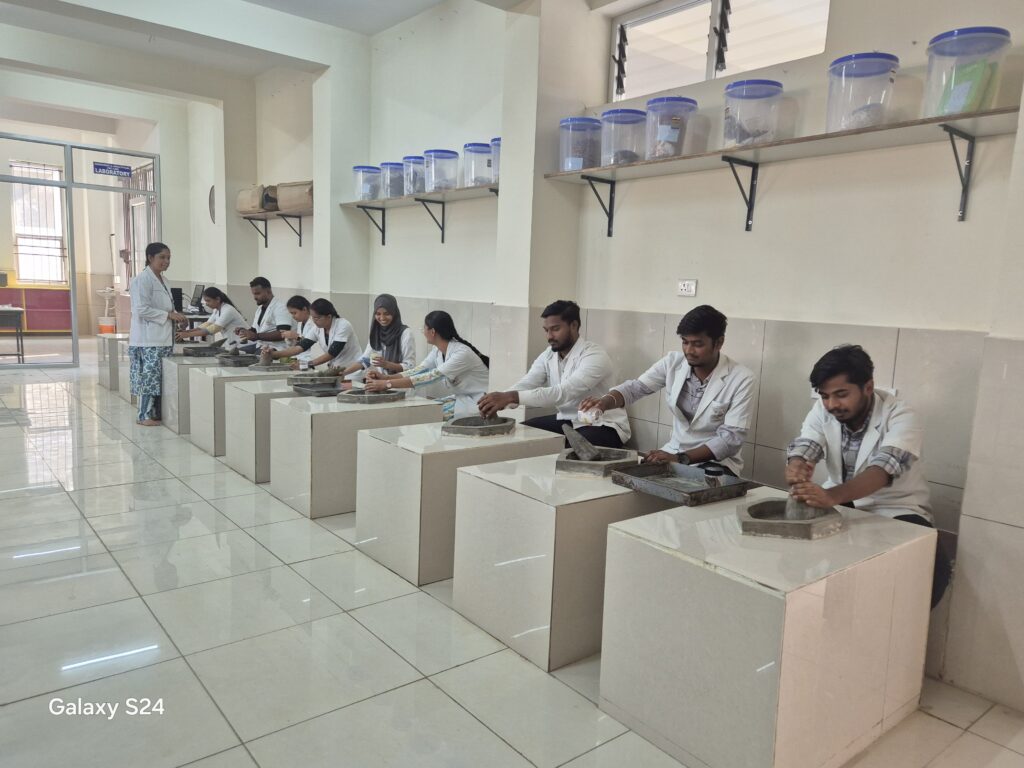
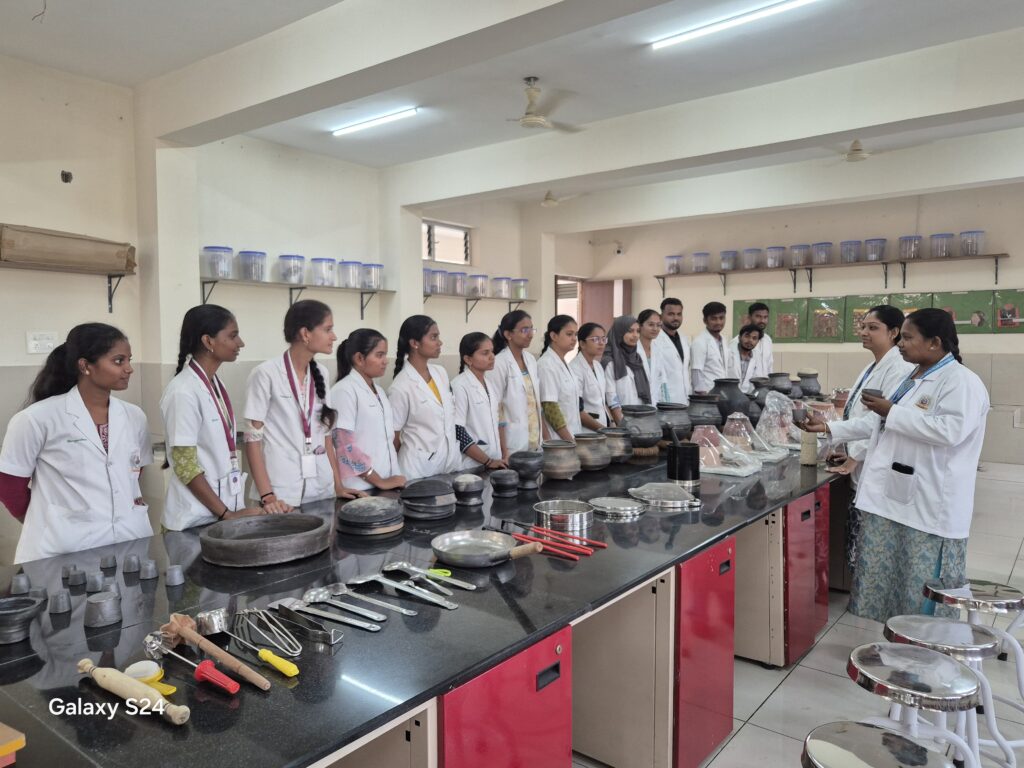

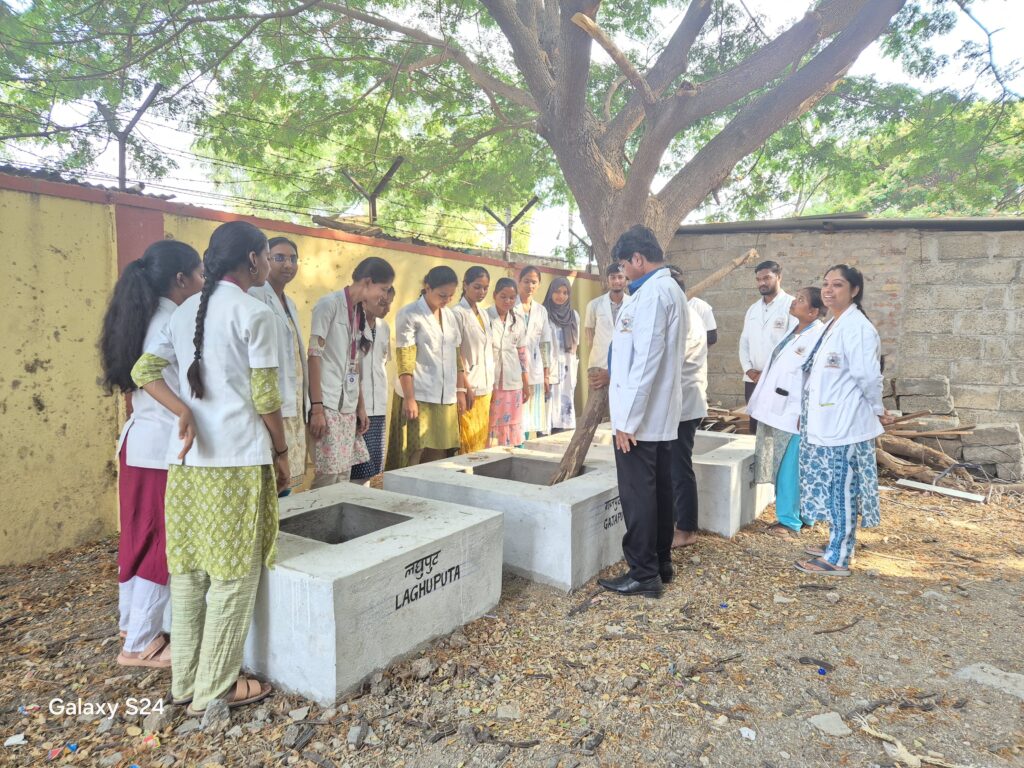
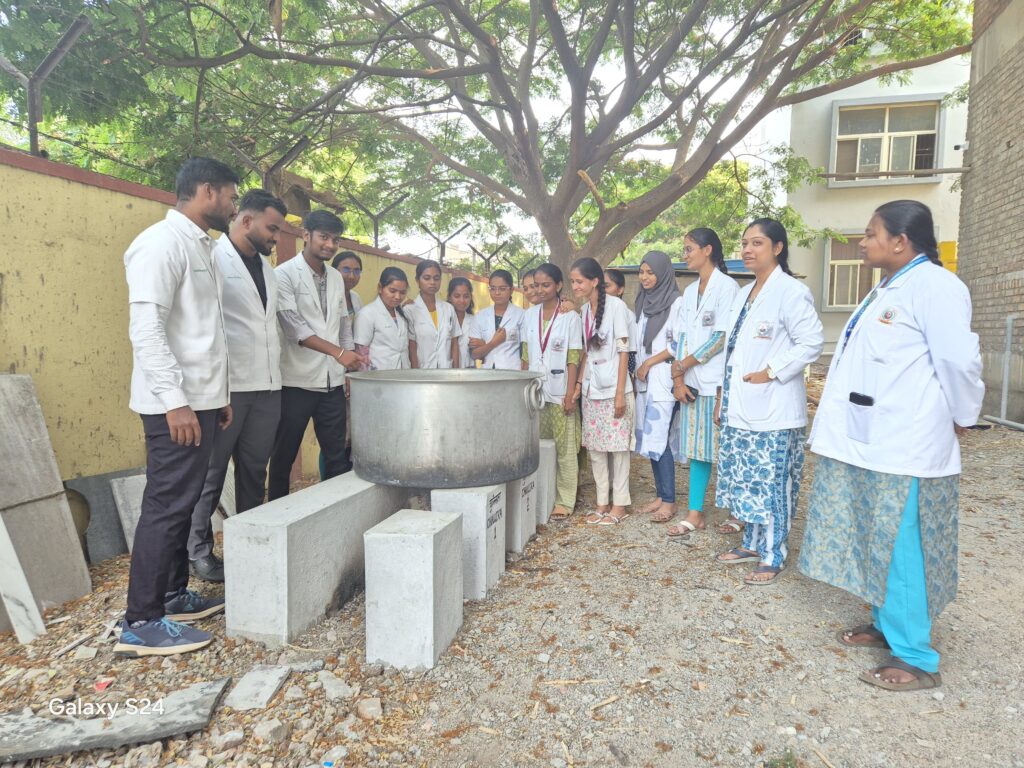
5) Dravyagunara vyaguna
- DRAVYAGUNARA VYAGUNA
- INTRODUCTION:-Dravyaguna Vijnana is an integral part of Ayurveda, which deals comprehensively with dravya, rasa, guna virya, vipaka, karma, prabhava (pharmacokinetics and pharmacodynamics) of herbs, animal, and all-natural sources since are used from Vedic period. This Branch also deals with the identification, collection, storage, and preservation of raw materials of all earthy origins. This Department works with objectives to provide knowledge of fundamental principles of Dravyagunasastra, drug action as per Ayurveda, the Indian traditional system of medicine. It also aims to develop a research methodology for the understanding of principles of Ayurvedic Pharmacology & Materia Medica balancing Classical & Contemporary knowledge. The department focuses on the conservation and cultivation aspects of medicinal plants and also indulges the need of Health seekers by supplying household medicinal plants which serve as remedy common ailments.
- Vision:-Impart quality education and achieve academic excellence in Modern Pharmacology, Ayurvedic Pharmacology & Materia Medica principles, balancing Classical & traditional knowledge of Indian medicinal plants.
- Mission:-Upholding the principles of Dravyaguna and promoting the development of scientific temper for Ayurvedic Herbal Research and Nurture the young talents to become skilled professionals in pharmacodynamics and pharmacokinetics of Ayurvedic medicinal plants. Preserve endangered species of medicinal plants and herbs.
- Departmental Initiatives
- • A well maintained Two acres of HerbalGarden having 265 species, total 500 number of plants some important species are- Guggulu (Commiphora mukul), Pippali (Piper longum), Musli (Chlorophytum borivilianum), Kamal (Nuphar lutea), Vacha (Acorus calamus),
- • Well-maintained Terrace Garden of important medicinal plants and wish to develop Green House Nursery for cultivation of medicinal plant saplings and also caters to the need of Health seekers visiting our Institution and hospital by selling of medicinal plants at a nominal cost.
- • Dravyaguna Dept. timely organizes workshops and hands-on training in the field of Plant identification (Basic botany), herbarium preparation techniques, and seed ball workshops for conservation aspects.
- • The department frequently has activities like field visits to the nearby flora of western ghats, and also visit Mahatma Phule Krushi Vidyapeeth Rahuri and other parts of
- • Besides market samples, drugs collected from the natural habitat of dry 366 and wet specimen 75 have been preserved. Plants preserved in formalin in their fresh state. The departmental library is enriched with 54 books on Dravyaguna, database, pharmacology, pharmacognosy & Samhita, etc.
- • The herbarium includes 50 families.
- • Plants are labelled QR codes that are identified by botanists.
- • Mode of education students received by lectures, PowerPoint templates, demonstrations, field visits, herbal garden visits, and pharmaceutical company visit to get basic standardization methods of natural products, identification of adulterants and substitutes, pharmacovigilance and adverse drug effects.
- • Department encourages Research aspect in students by guiding them in oral paper presentations and Publications in peer review International Journal.
- DEPARTMENTAL ACTIVITIES
- Department encourages Research aspect in students by guiding them in oral paper presentations and Publications in peer review International Journal.
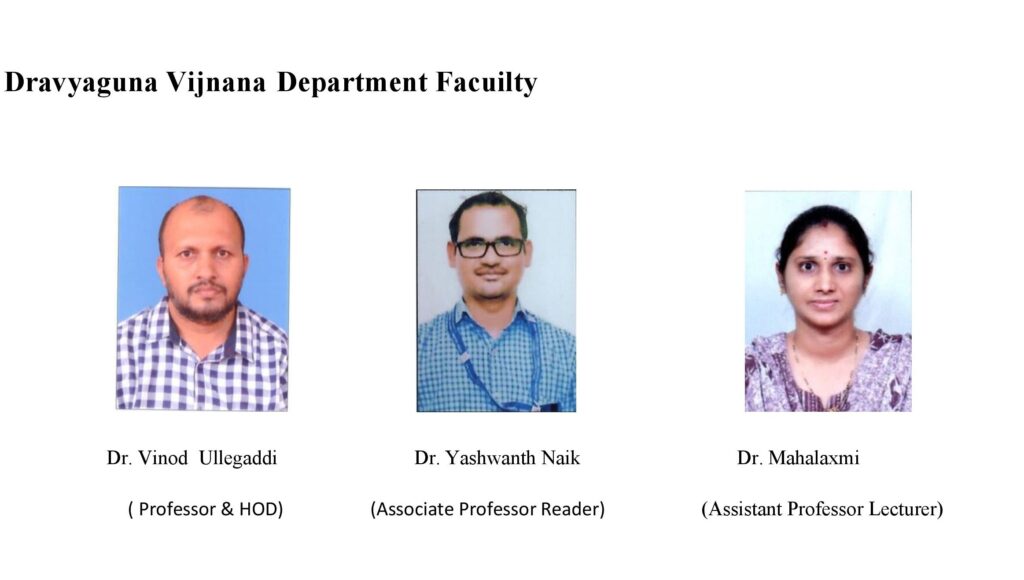


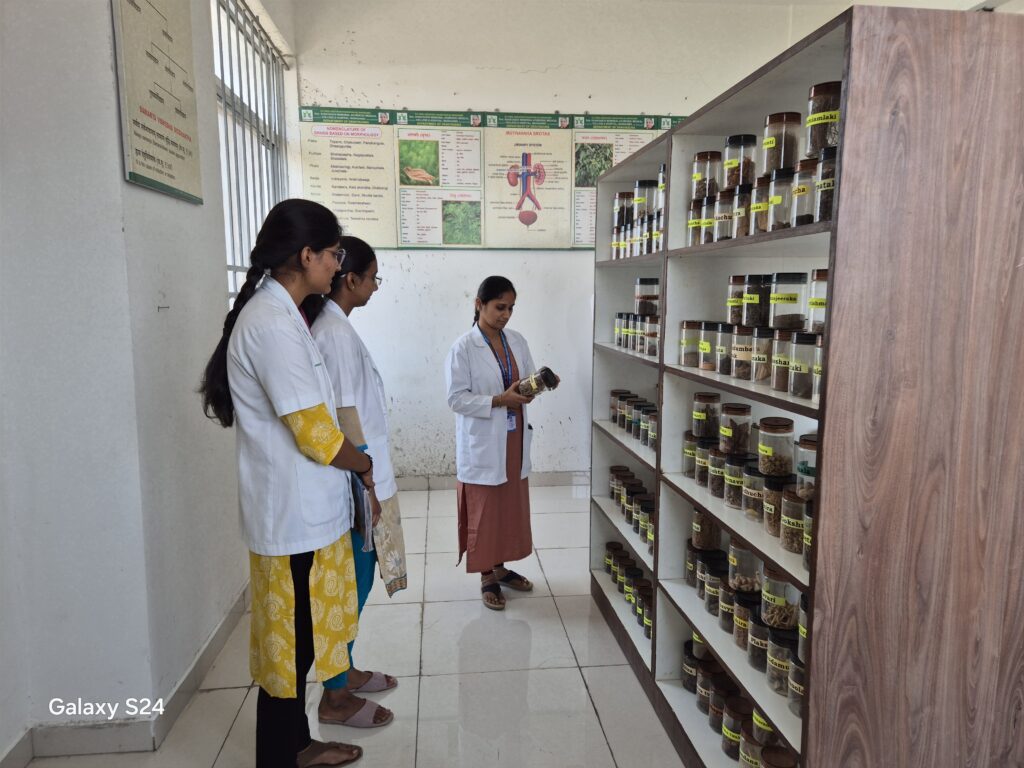
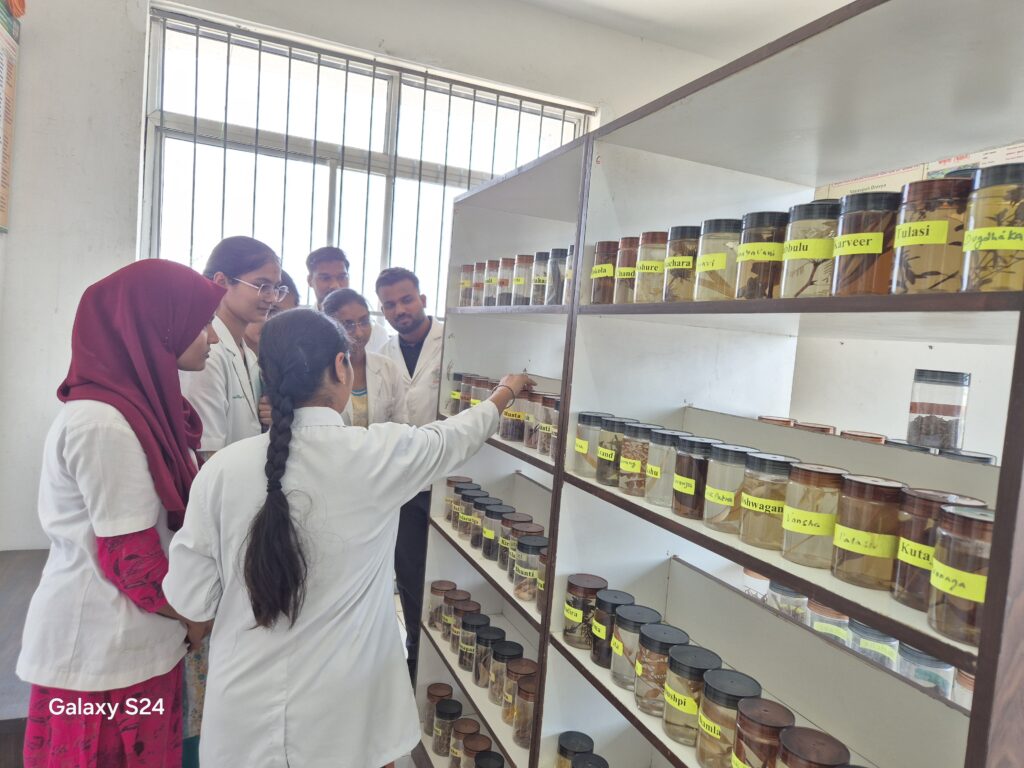

06) Rognidan Avum Vikriti Vidgyana
ROGNIDANA AVUM VIKRITI VIGYANA
Introduction: In this Rognidana Dept we study about the causes of the disease, changes in their normal functions, deformity in the organs while disease has been caused. There are various kinds of examinations like Trividha Pariksha, Chaturvidha Pariksha, Shadvidha Pariksha, Ashtavidha Pariksha, Dashavidha Pariksha helps us to know whether the person is (Swastha) normal or (Aswastha) abnormal.
Shatkriyakala means how diseases are manifested stage by stage in the body. Strotas Sankalpana , Vyadhi Awashta, Diseases study by Nidan Panchaka like nidana, poorva roopa, roopa, upashayanupashaya and samprapti.
Vision Of Department : Rognidana Dept teaches students to examine the patient and to diagnose disease by various kinds of examinations mentioned in the granthas. At which stage of the disease, is disease curable or not. Sadyasadyata we can conclude through Arishta Lakshanas.
Mission Of Department : To diagnose the patient’s disease at the early stage and to give the proper treatment which is needed. Nidan panchak , Nidan Parivarjana, Pathya and Apathya Ahara are advised to patients to cure the diseases.
Objectives :
1. Examination of patient
2. Examination of Rugna Bala , Rog Bala
3. Is disease curable or not assessed through the condition of patient “Arishta Lakshnas”
4. Chikitsa Chatushpad
5. Strotas Sankalpana Study
Teaching And Learning Methods :
• Class room teaching through theory lectures.
• Batchwise practical classes.
• Group Discussion.
• Project \ Models Making according to the disease pathology.
Benefits to Students:- Students learn more effectively by the above mentioned methods. Definitely students will utilize all these methods while they examine the patients by this they become good well trained doctors.
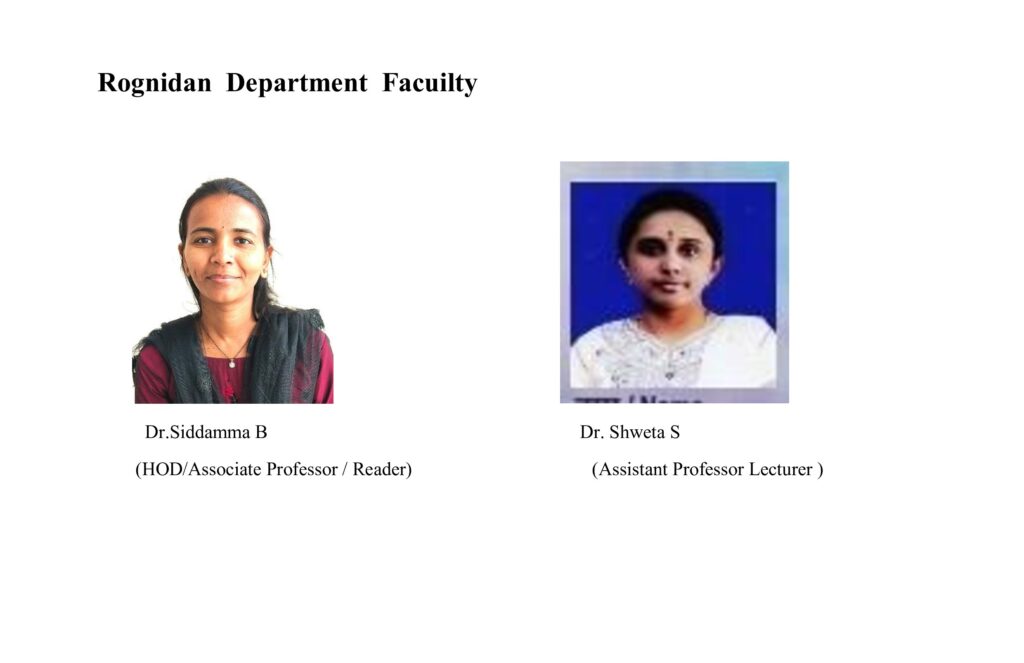
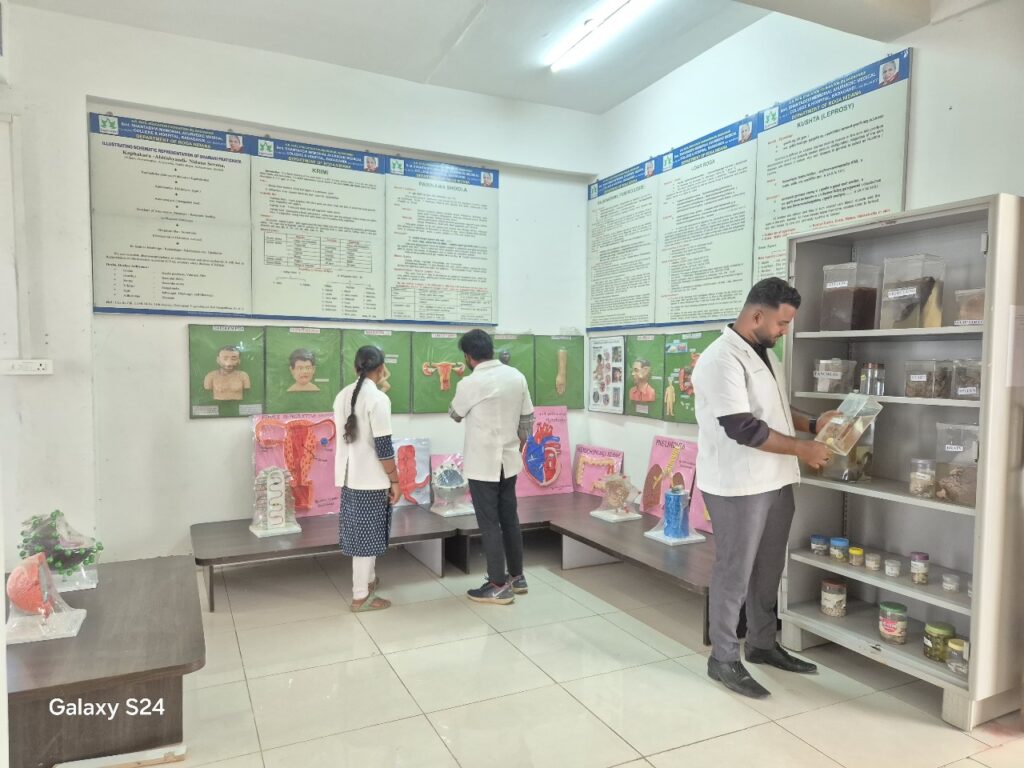
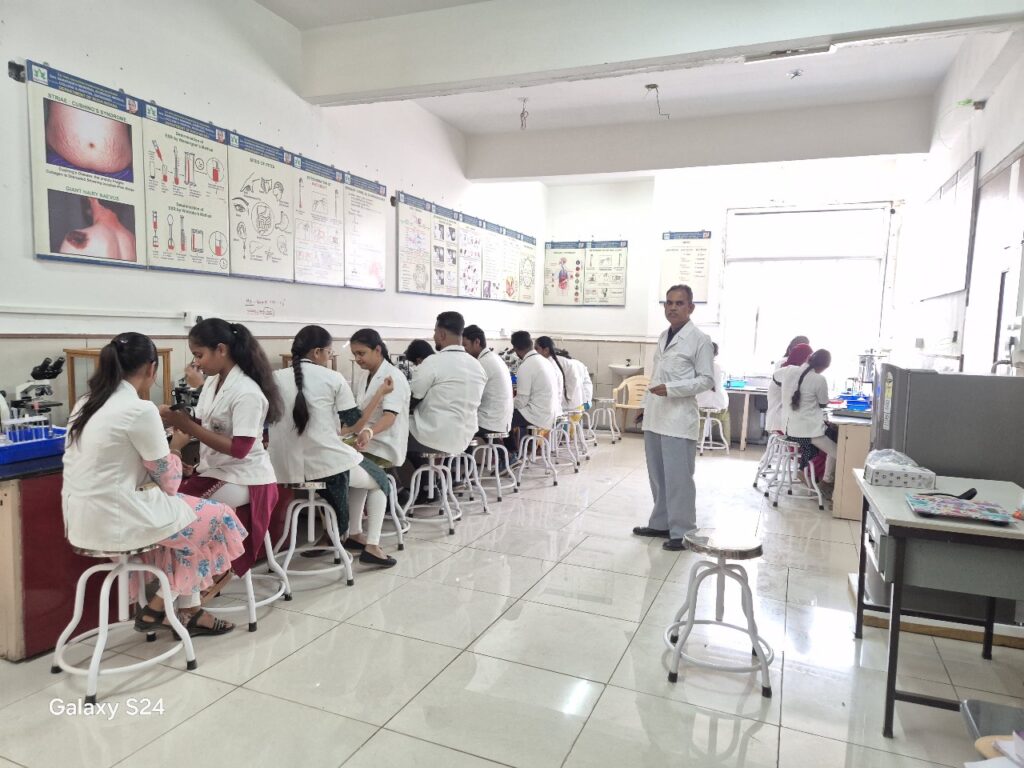
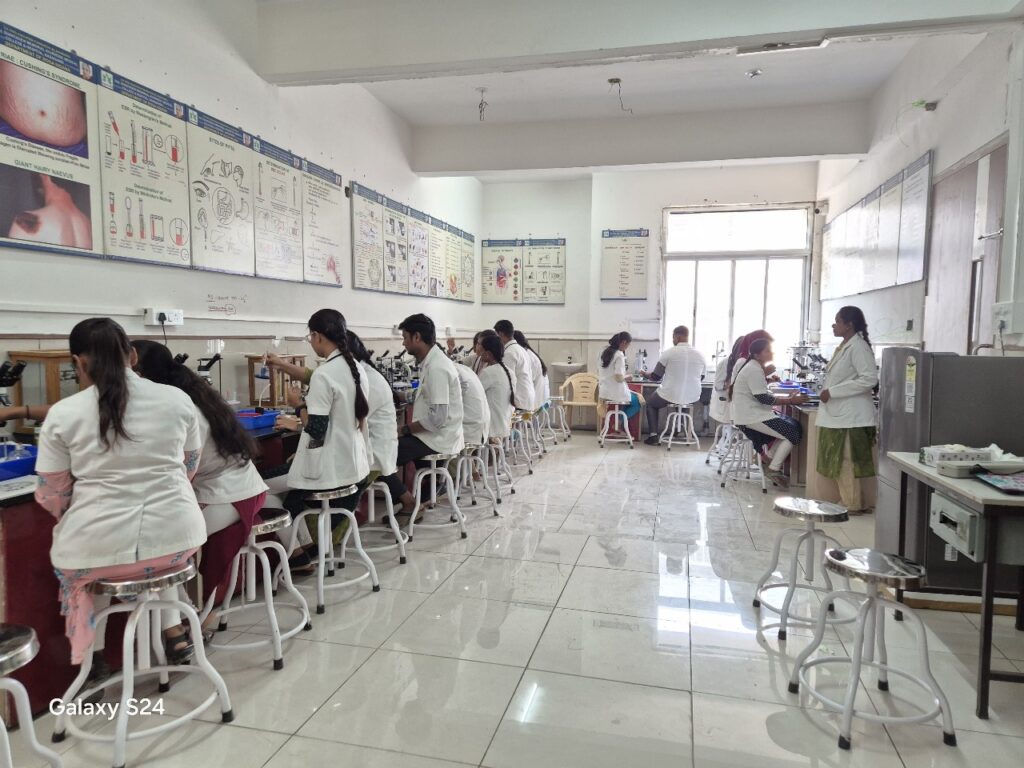
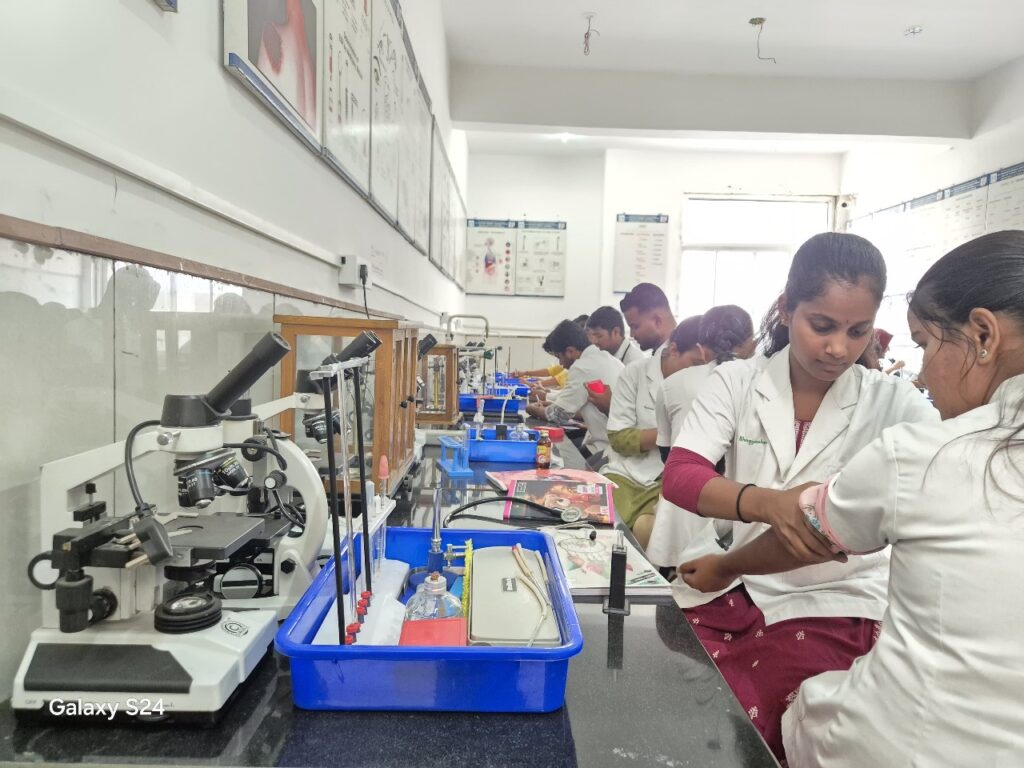
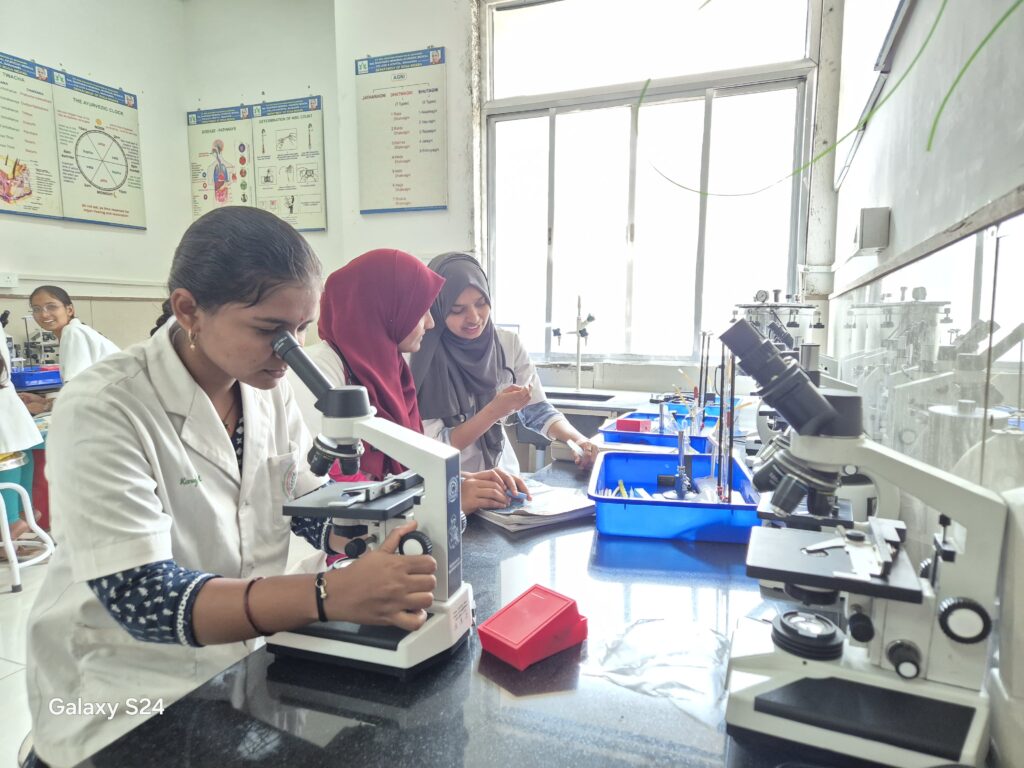
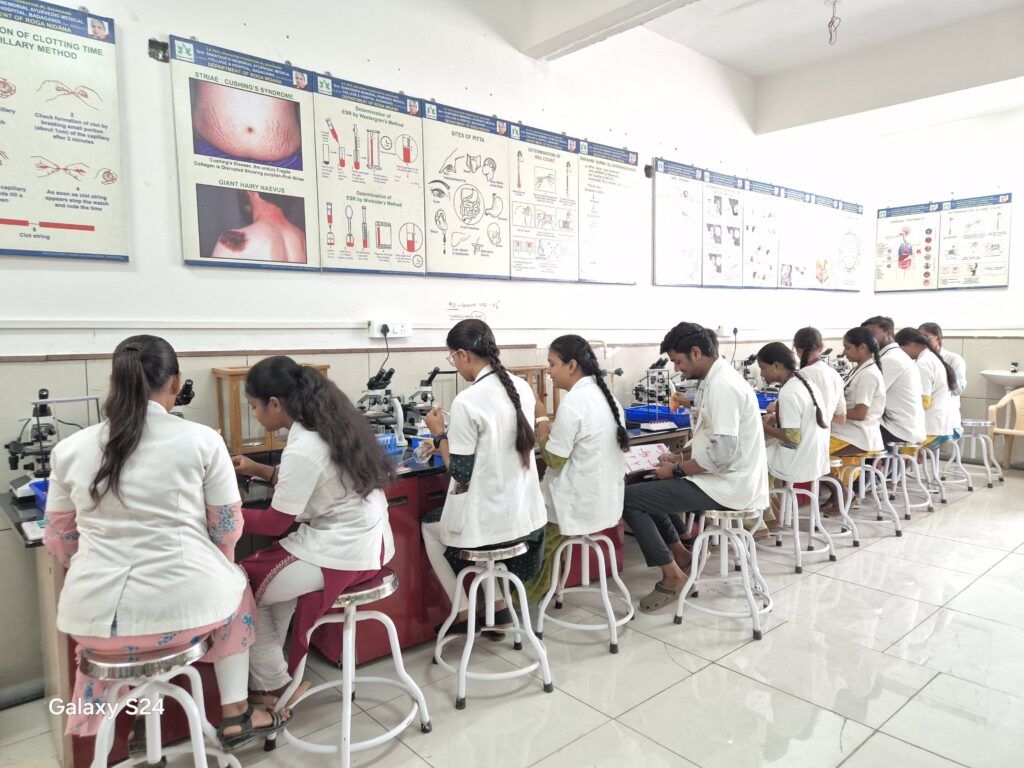

07 ) Swasthavritta & Yoga
The Swasthavritta and Yoga department focuses on preventive healthcare, lifestyle management, and holistic well-being based on Ayurvedic principles and yogic sciences.
Vision
To promote holistic health and well-being by integrating the principles of Swasthavritta (Preventive Medicine) and Yoga, fostering a disease-free society through a balanced lifestyle, diet, and mental well-being.
Mission
1. Preventive Healthcare Awareness – Educate individuals on Ayurveda’s preventive measures, including Dinacharya (daily regimen), Ritucharya (seasonal regimen), and Sadvritta (ethical conduct) to maintain health.
2. Promotion of Yoga & Ayurveda – Encourage the adoption of Yoga, Pranayama, and Meditation for physical, mental, and spiritual well-being.
3. Community Health Initiatives – Implement public health programs, workshops, and research to address lifestyle disorders like diabetes, hypertension, and obesity.
4. Evidence-Based Research – Conduct scientific studies on the efficacy of Swasthavritta and Yoga in preventing and managing diseases.
5. Holistic Education – Train healthcare professionals with a deep understanding of Ayurveda, Naturopathy, and Yoga, integrating traditional wisdom with modern scientific approaches.
6. Environmental Health & Sustainability – Promote eco-friendly practices, including Ayurvedic dietetics, detoxification therapies, and natural living, for overall societal well-being.
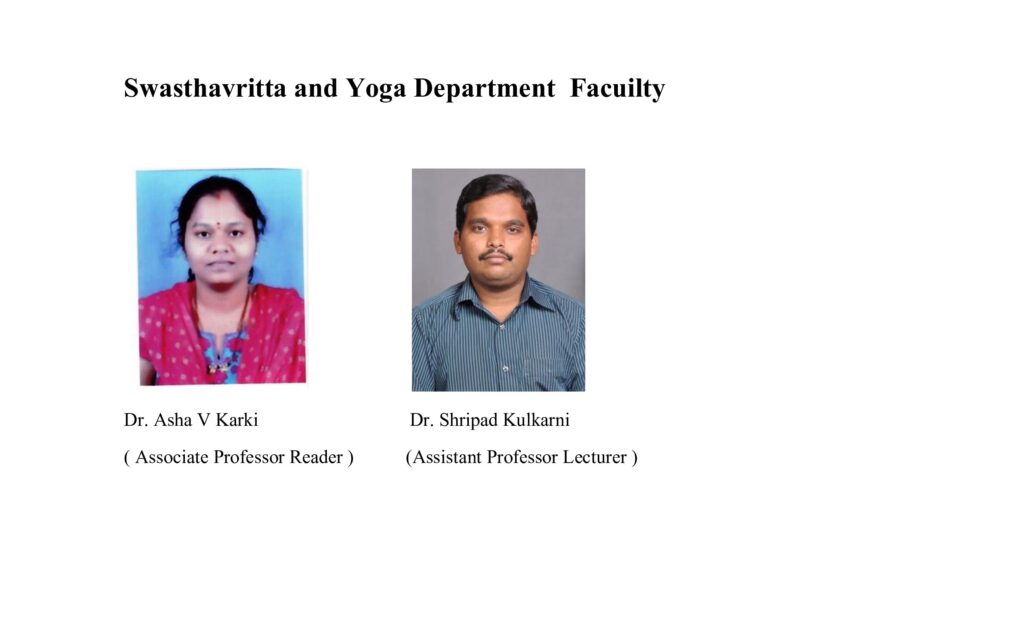
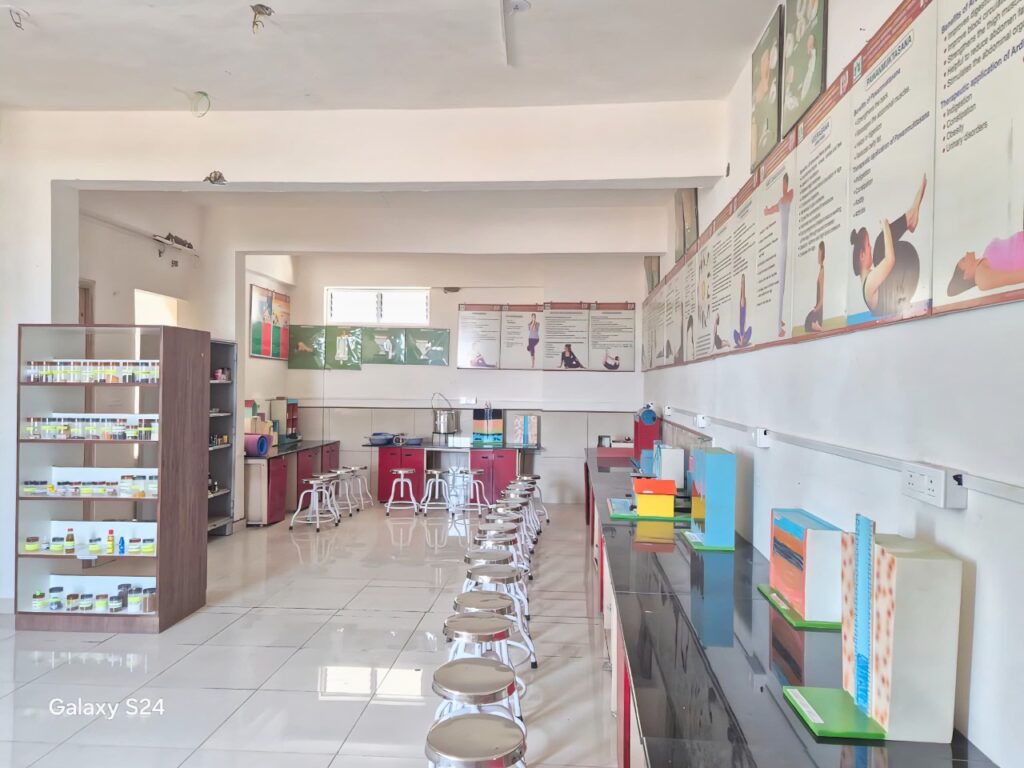
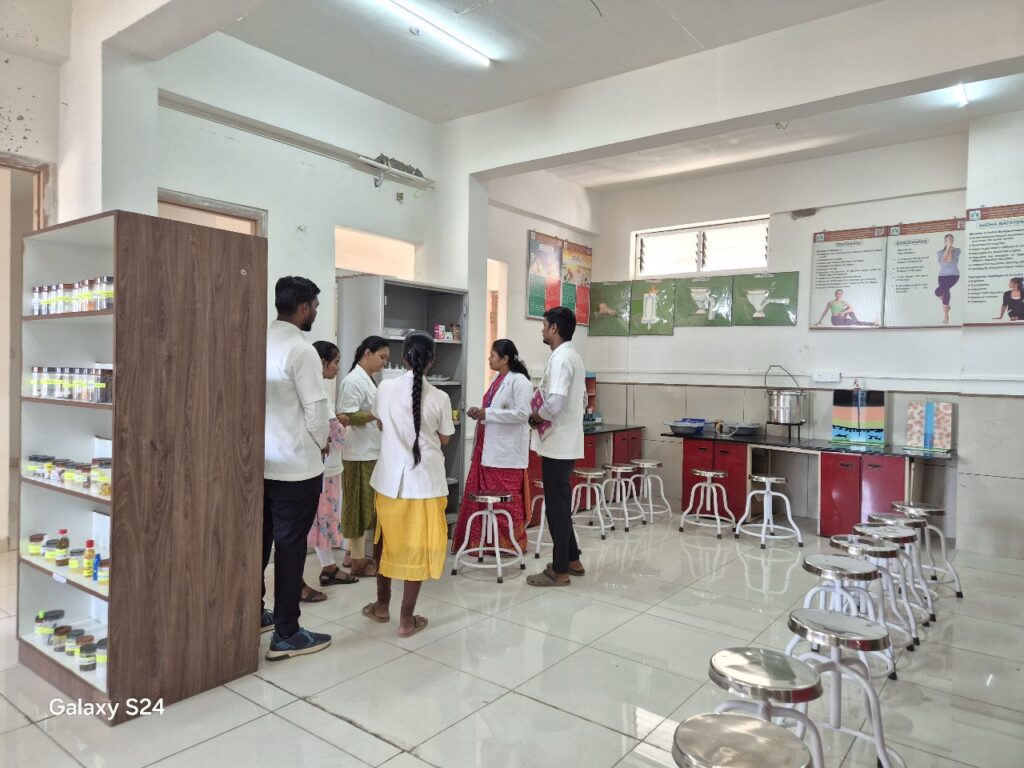
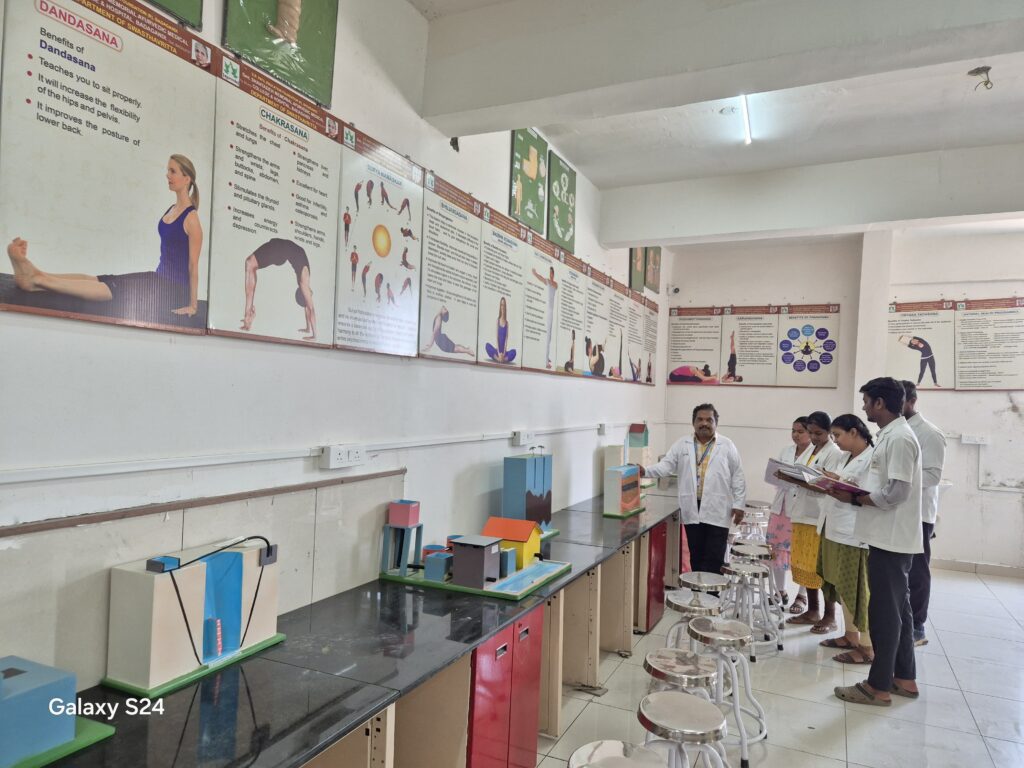
08 ) Agadtantra
Agada Tantra is a branch of Ayurveda which deals with identification, prevention, diagnosis and treatment of various Visha conditions (Animate, Inanimate, Subclinical, and Residual and Cumulative toxicological presentation). the department is growing and working for the upliftment of Agada Tantra.
To uplift the glory of Ayurveda Vishachikithsa by exploring the classical and traditional knowledge on scientific grounds.
Mission
Explore the VishaChikithsa by adapting and using Current Scientific Technologies with collaboration to Centre’s of Excellence and Traditional Practitioner’s.
Objectives:
To scientifically validate the Antidoatal effects of Agada ‘s, for Garavisha (artificial Poisons) and Dooshivisha (Low potent poisons)
To survey the traditional Practices of Visha Chikithsa.
To establish the art of treatment of Skin Diseases Through fundamentals principles of AgadaTantra.
To Establish the Ayurveda Environmental Toxicology on Scientific grounds.
Department works in domains like organ toxicities caused by routine food and medicines, Teratogenecity, Antidotal activity, Environmental toxicity, residual and cumulative toxicity etc.
Department has come up with innovative practices like adulteration tests, weekly presentation of Medico-legal cases and many other which are required for present scenario where even consuming food & water is not considered safe.
Department also engages itself to different visits to Snake Park, Forensic Science Laboratories, State Pollution Control Board, Court visits, Industries, Folklore Practitioners, Surveys, Food Adulteration Testing Centres and many more. These visits help the students to update and understand the importance of Agada Tantra in relevance to modern health and lifestyle. With this knowledge the Students are encouraged for practice of Agada Tantra with concepts of Garavisha, Dooshivisha and able create awareness of increasing trends of chemical bio magnification in food chain and ecosystem.
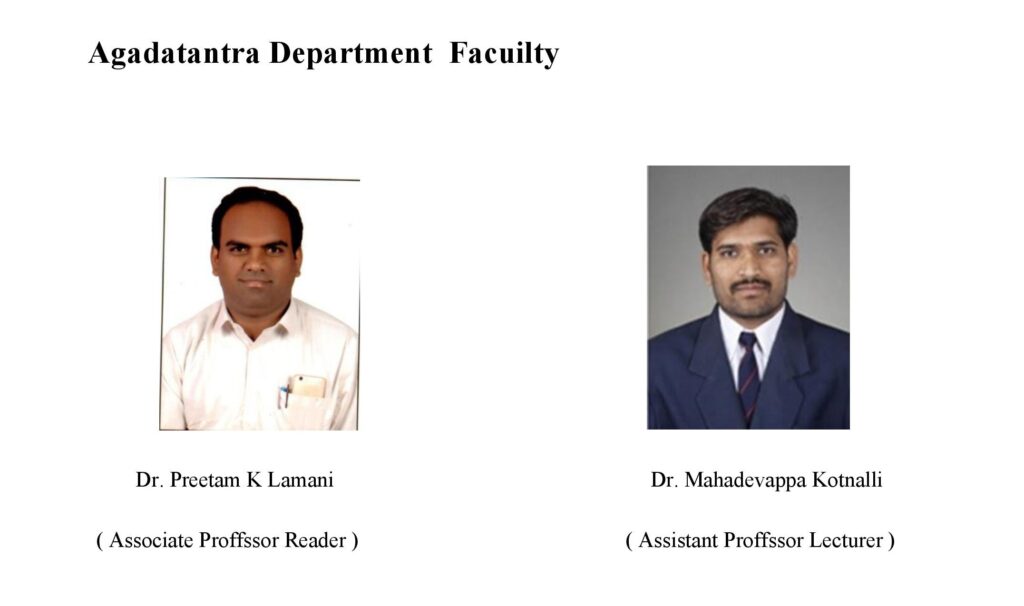
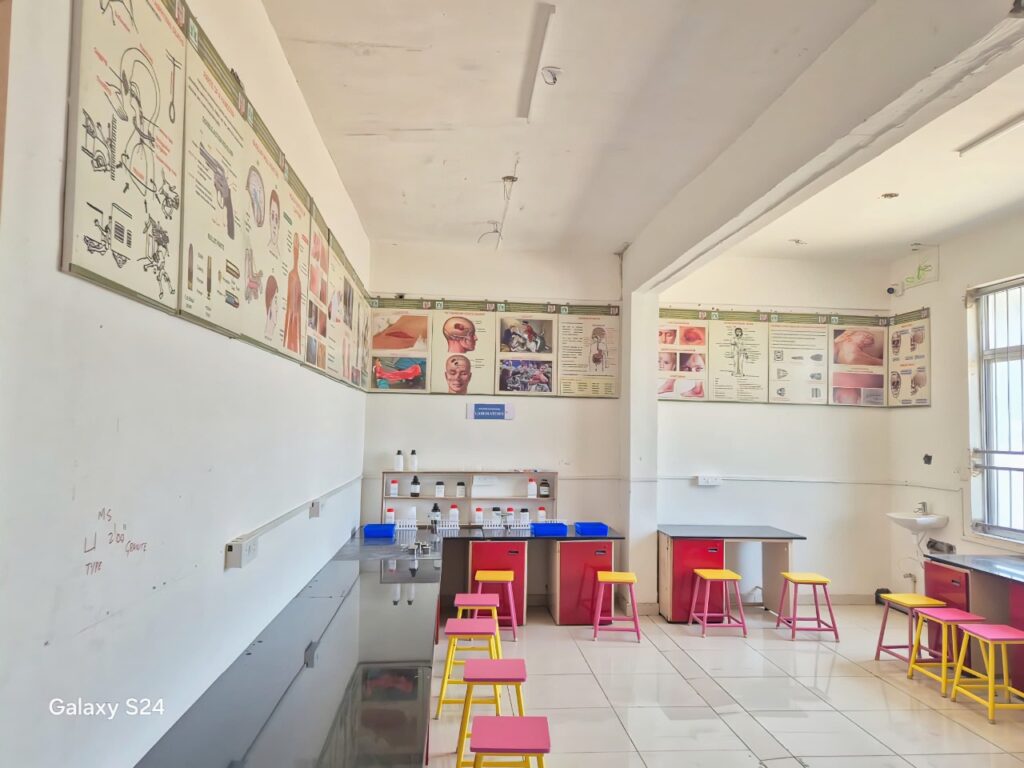
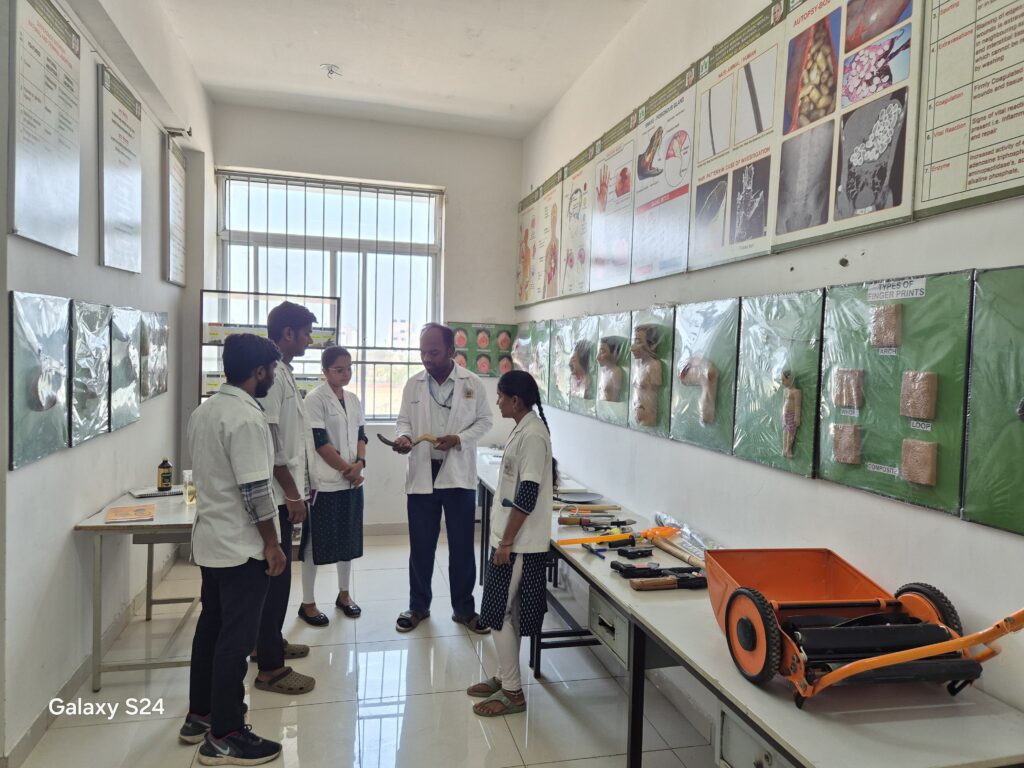
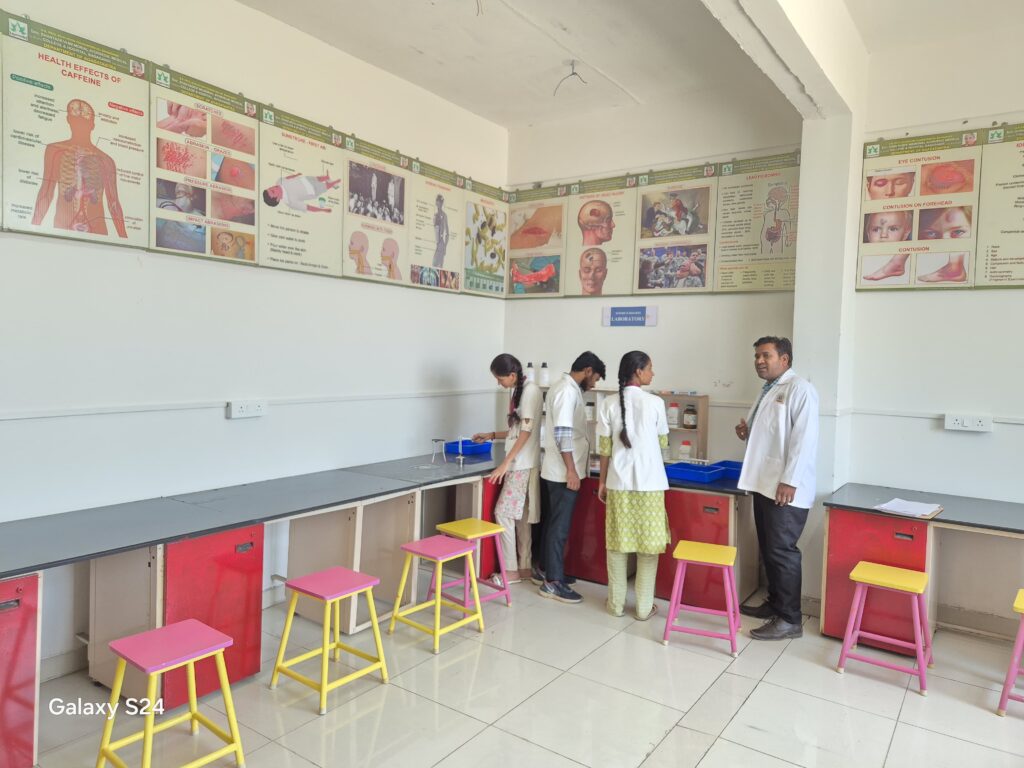
3rd Year Professional Departments
Prasooti Tantra and StreeRoga
Panchakarma
Shalyatantra
Shalakya Tantra
Kaumarabhritya
Kayachikitsa
